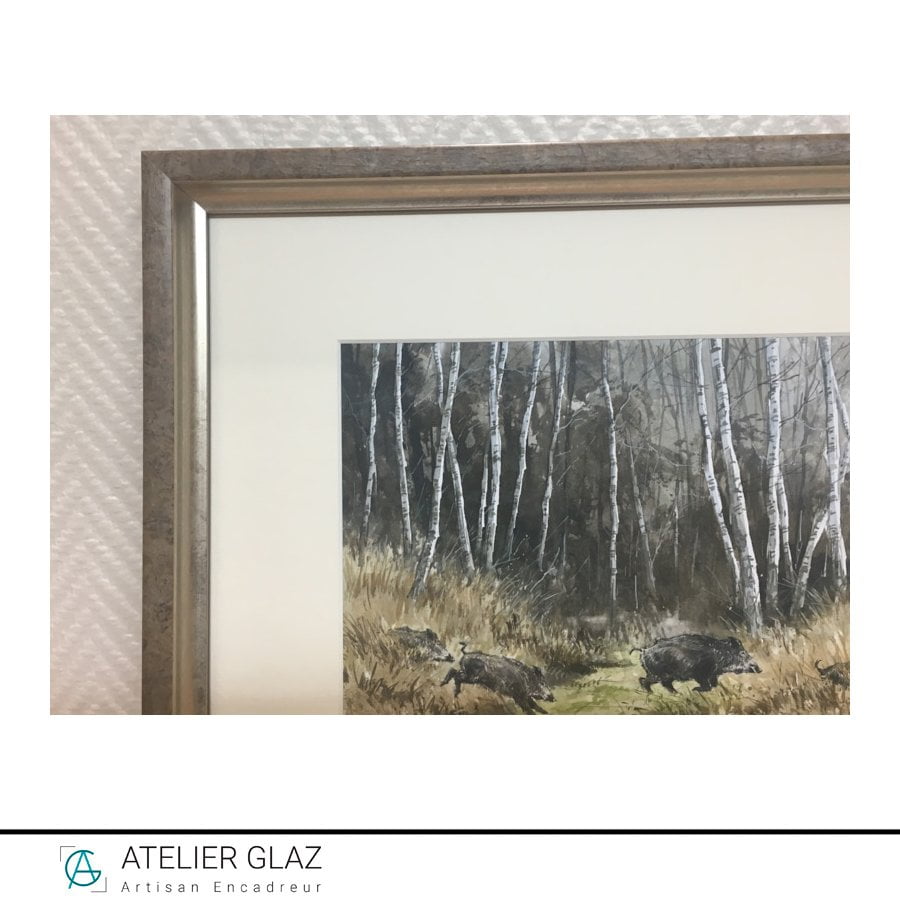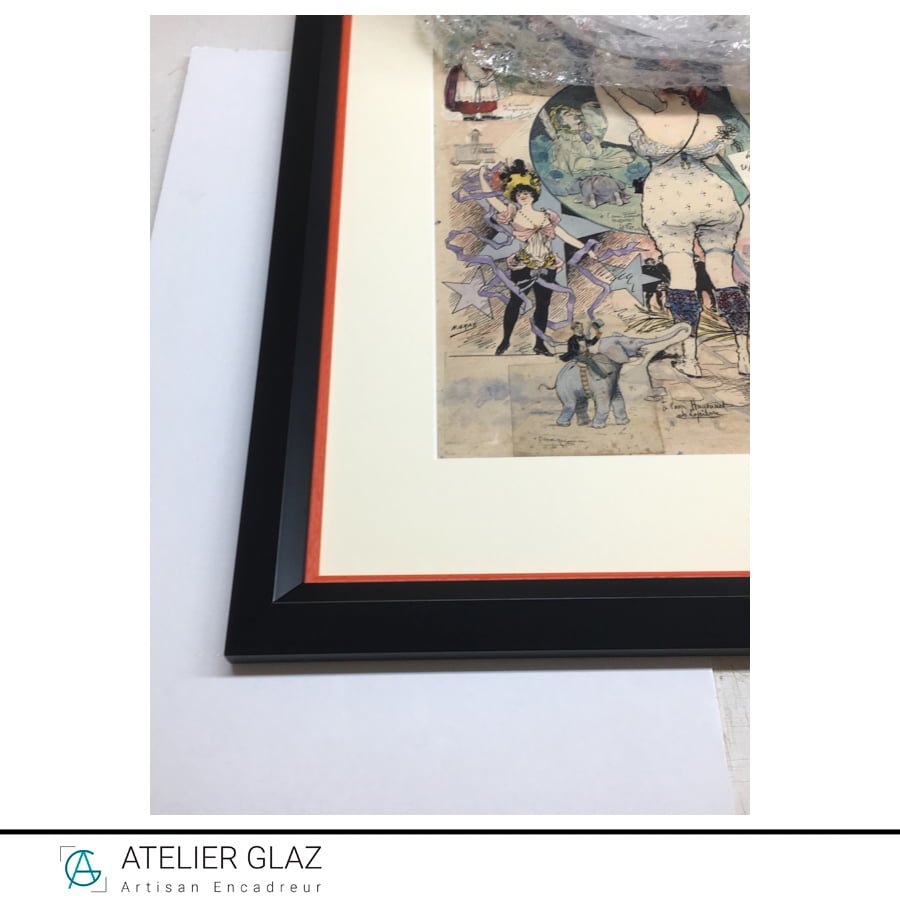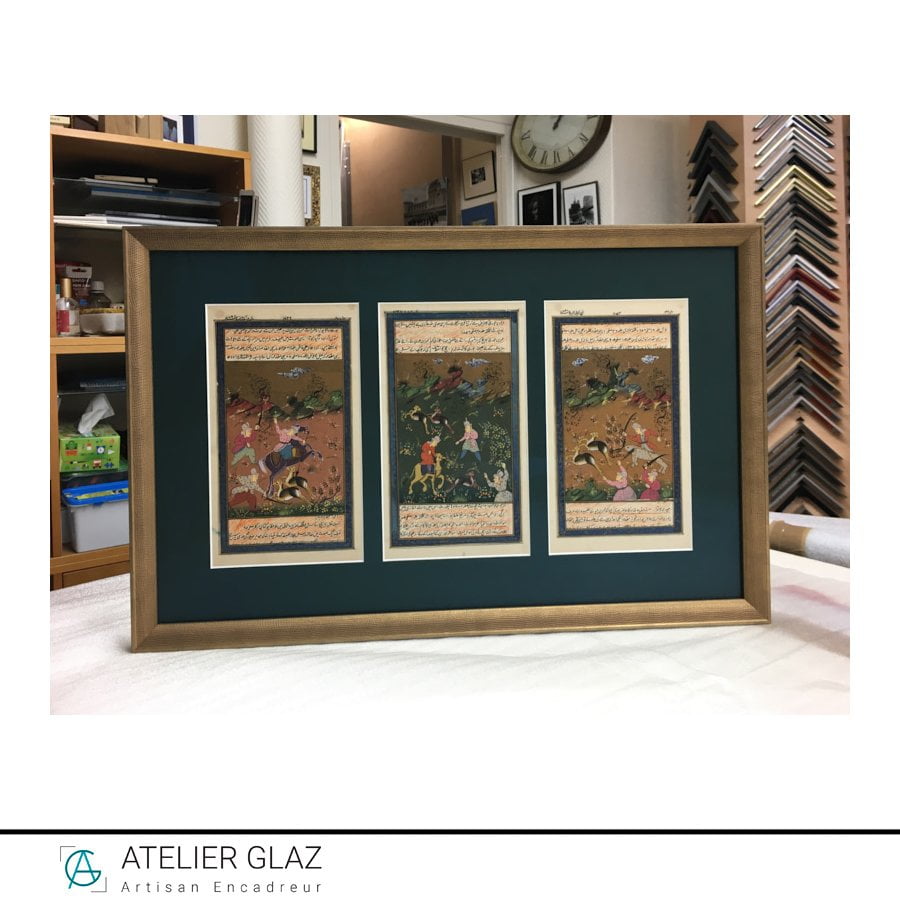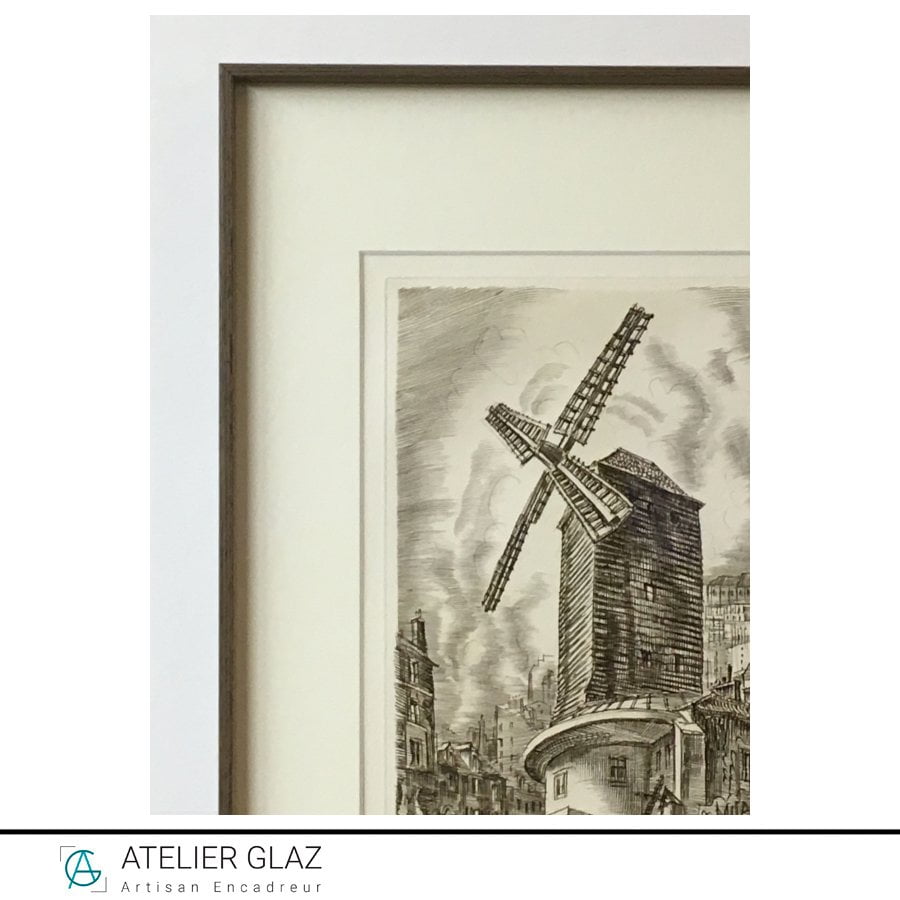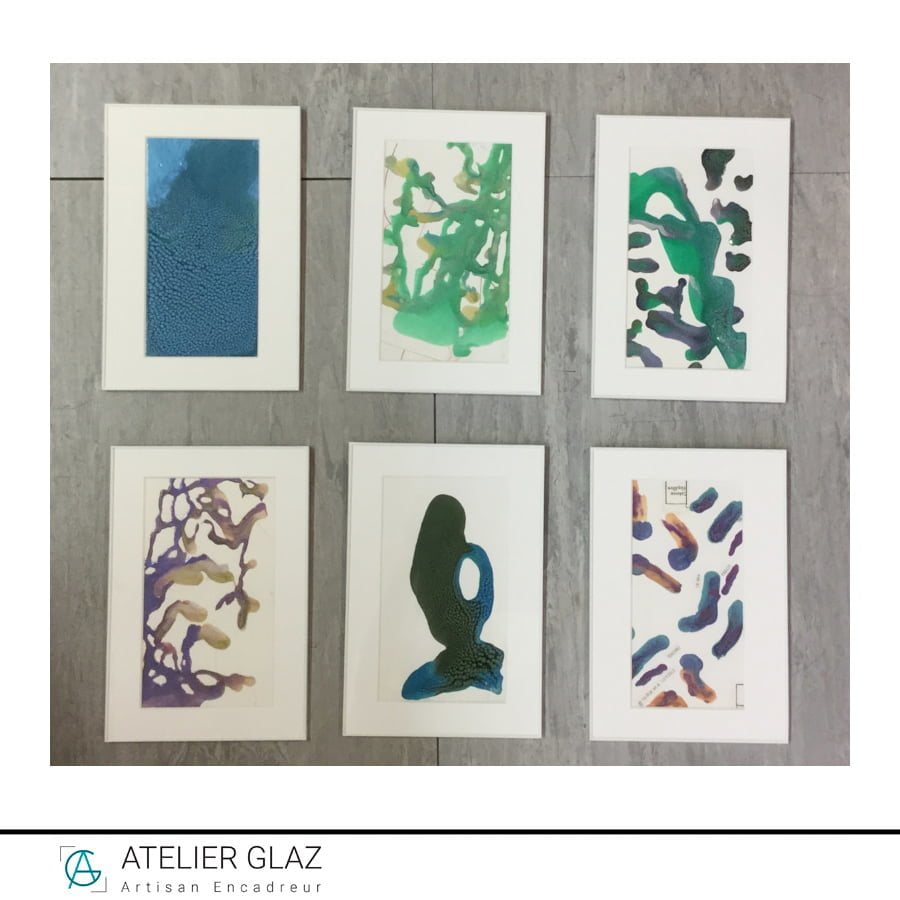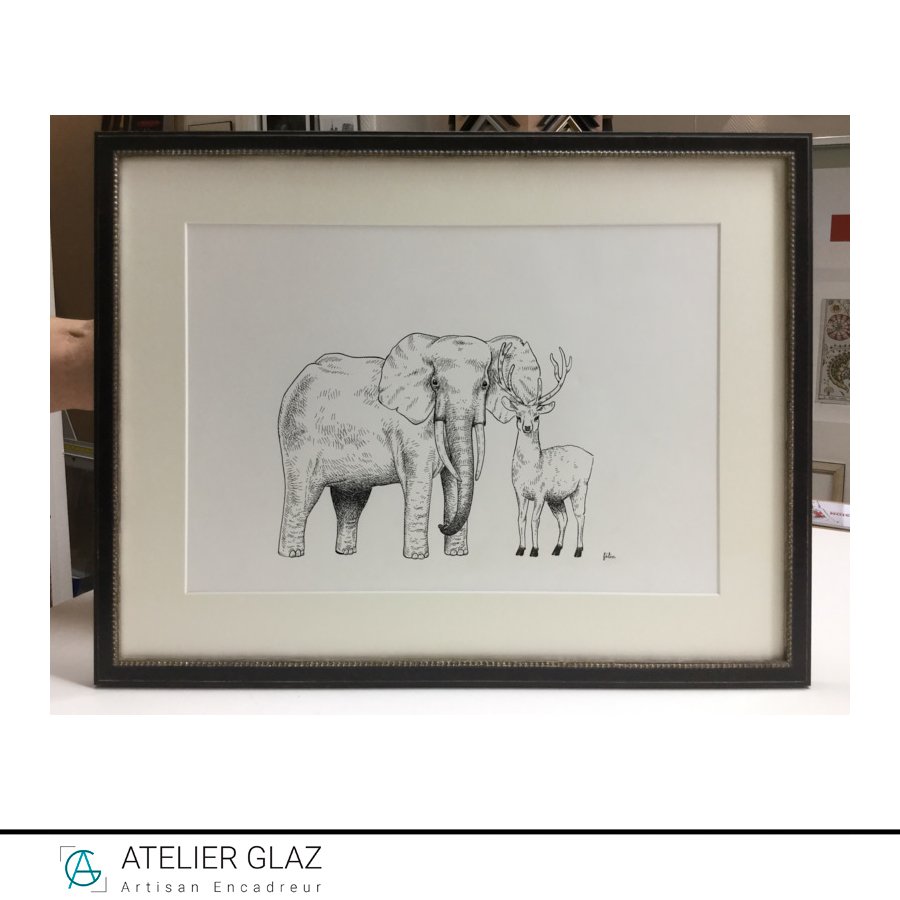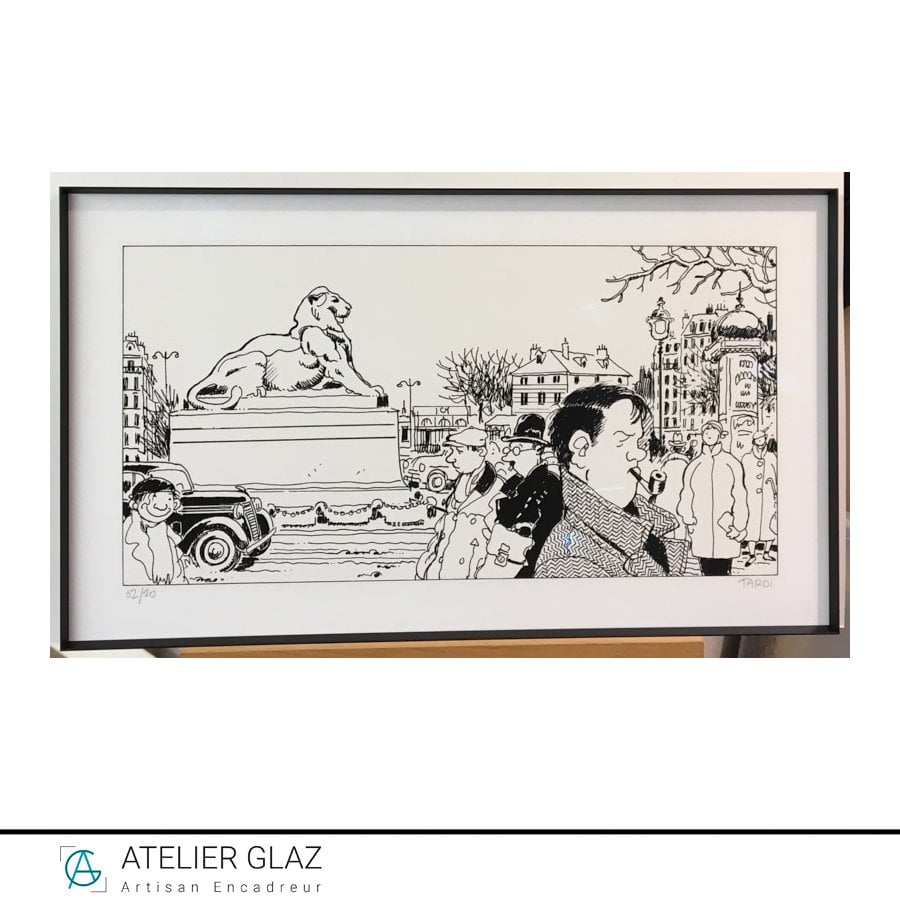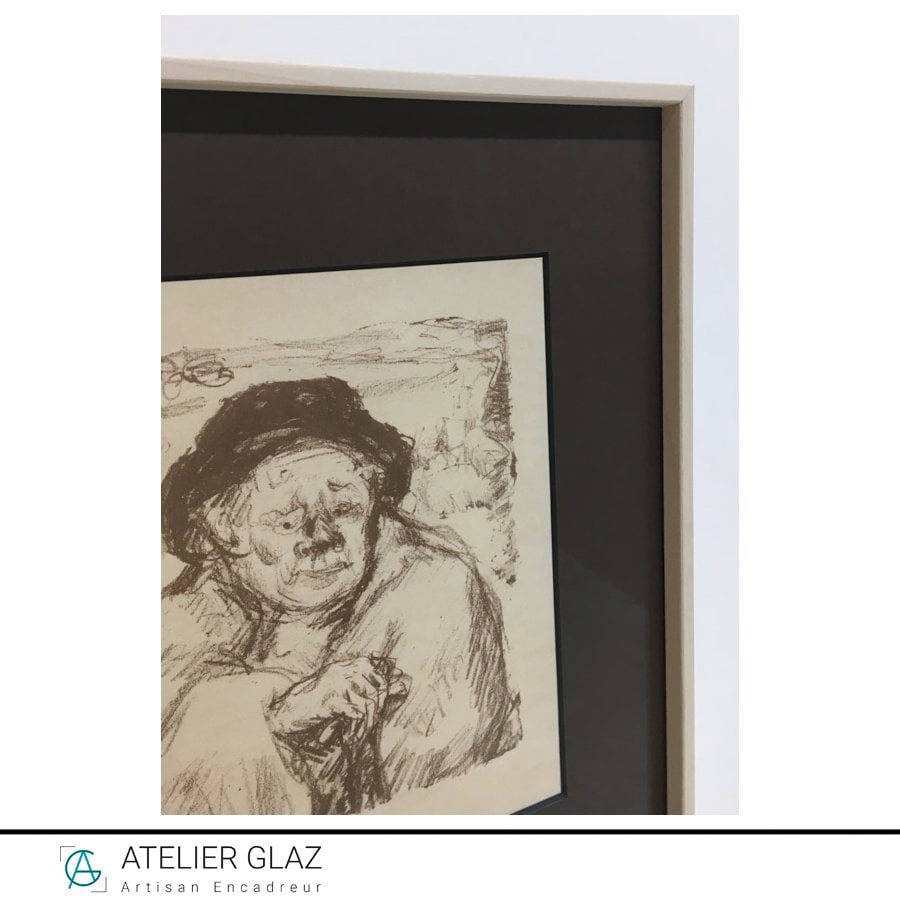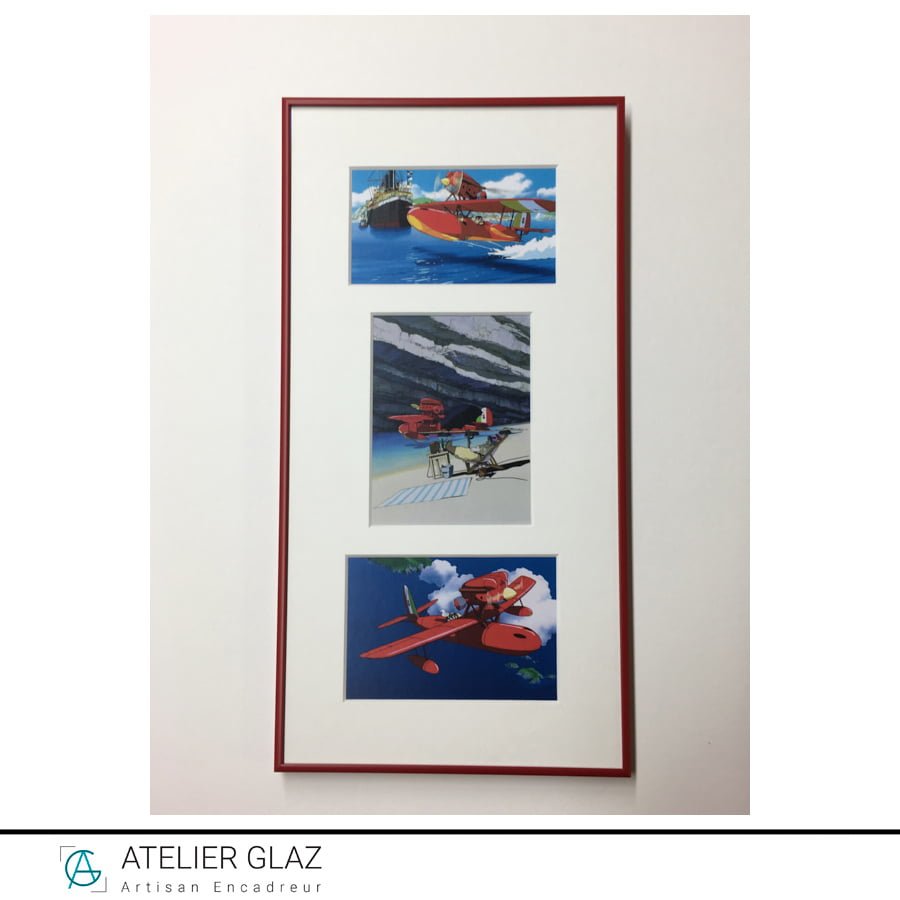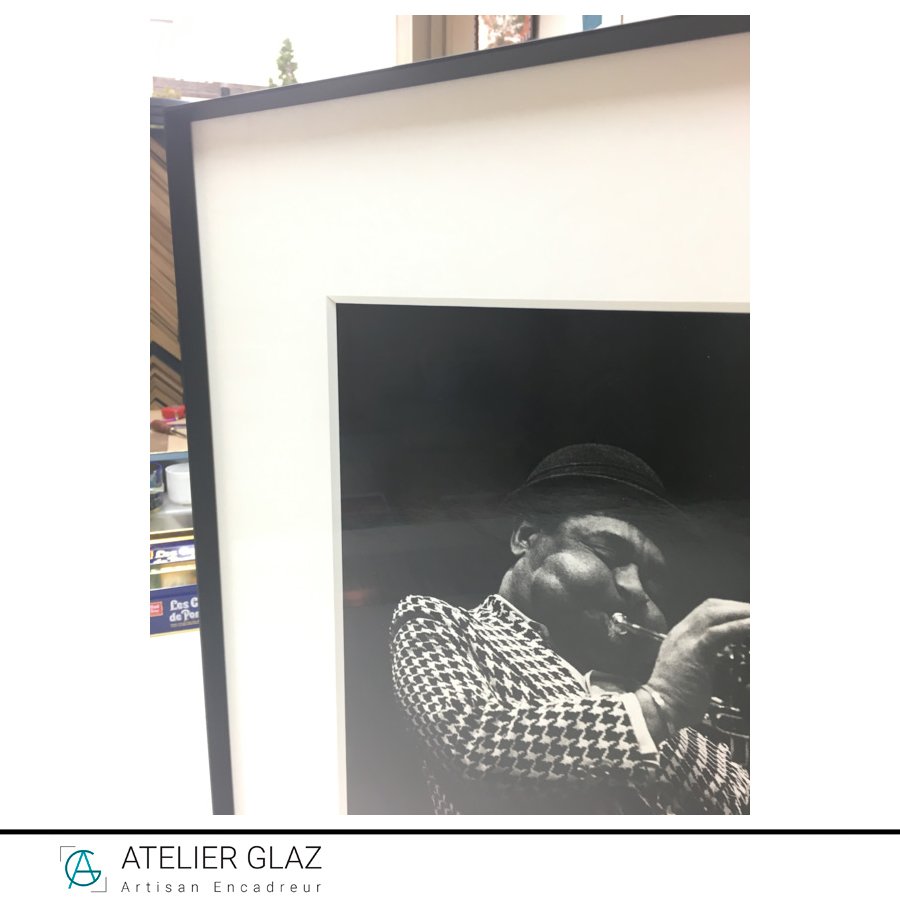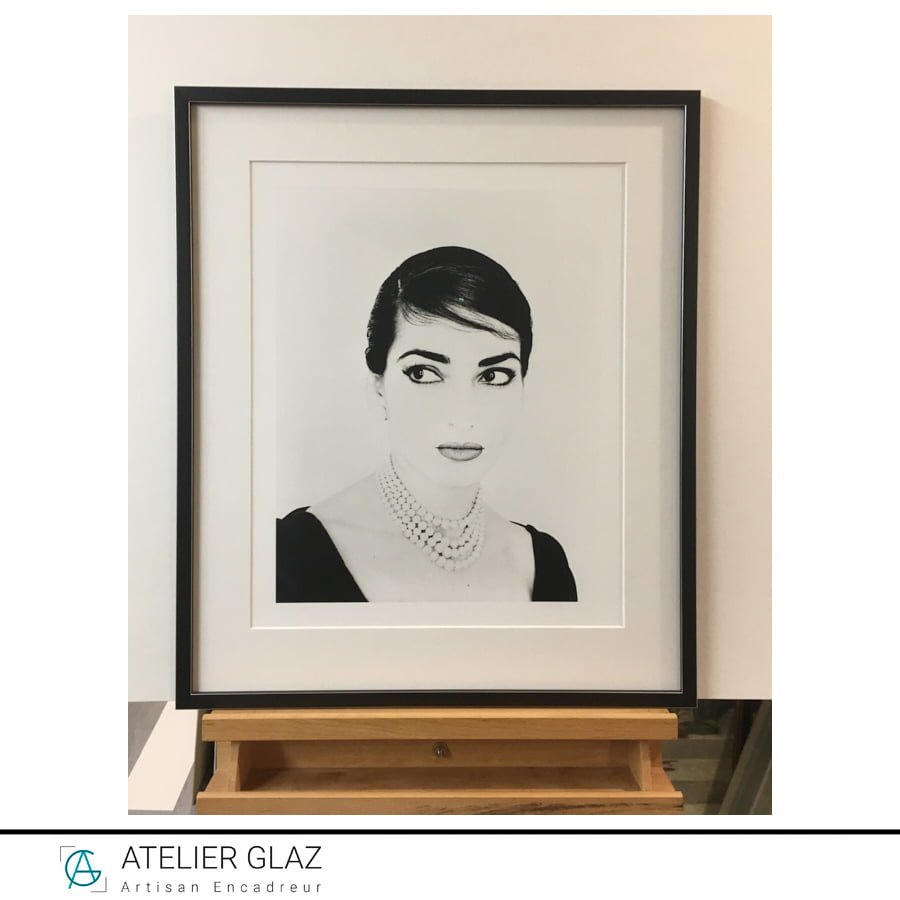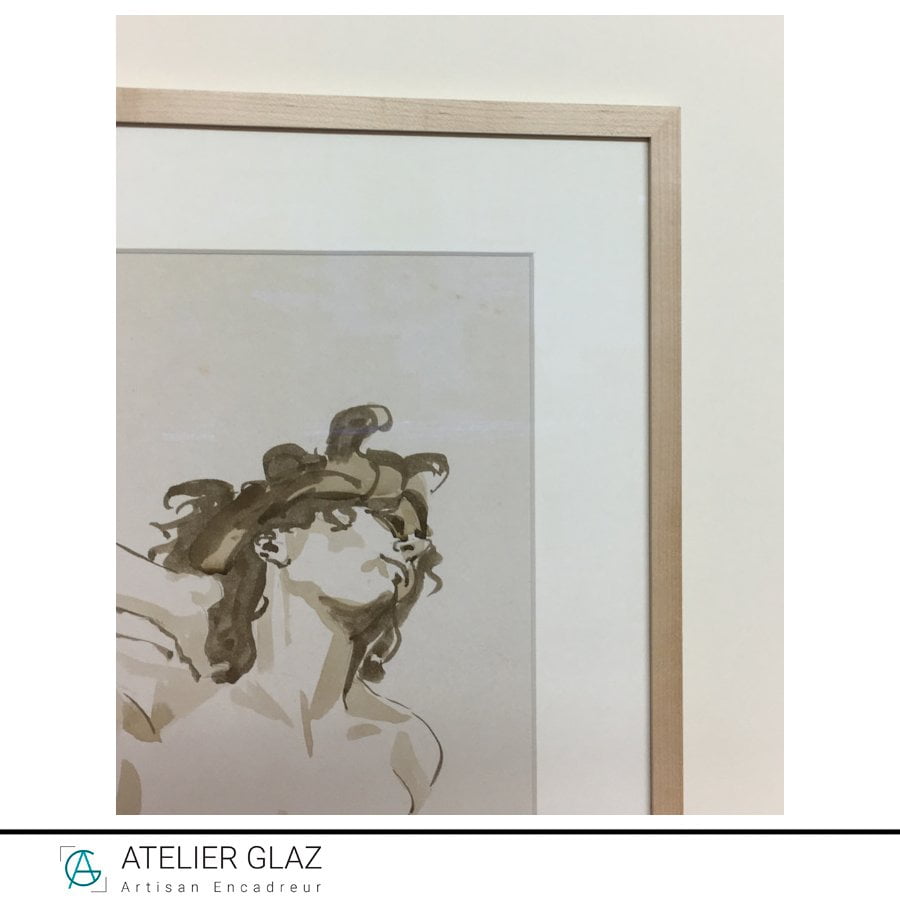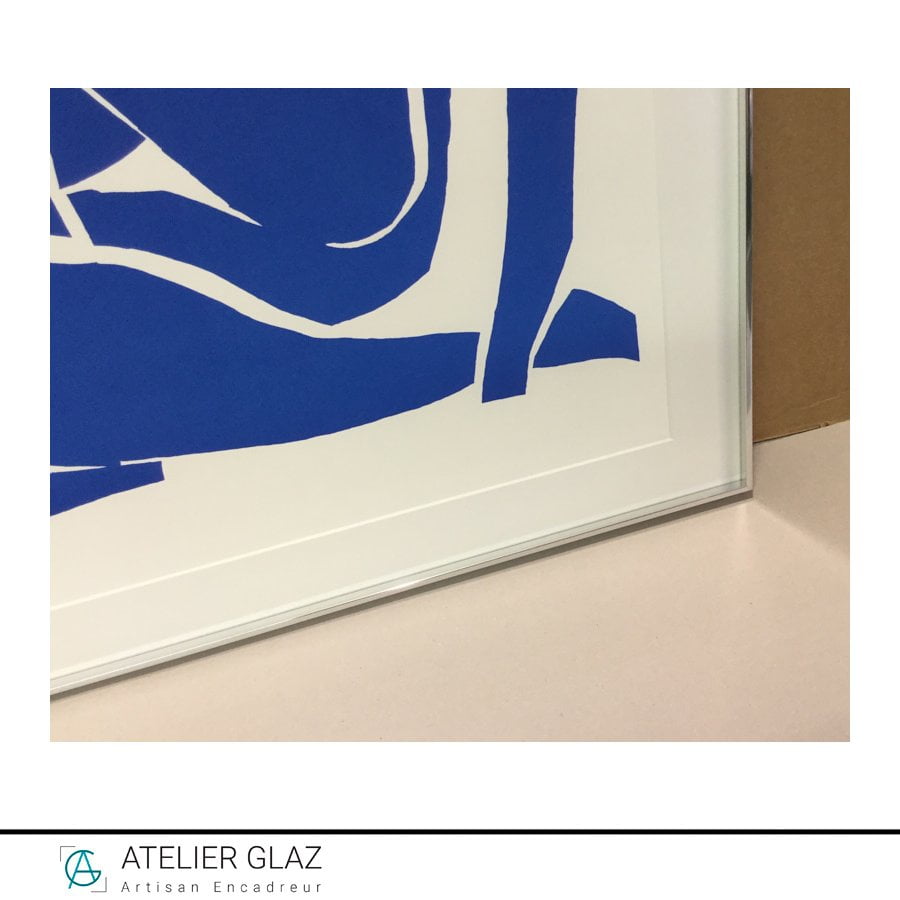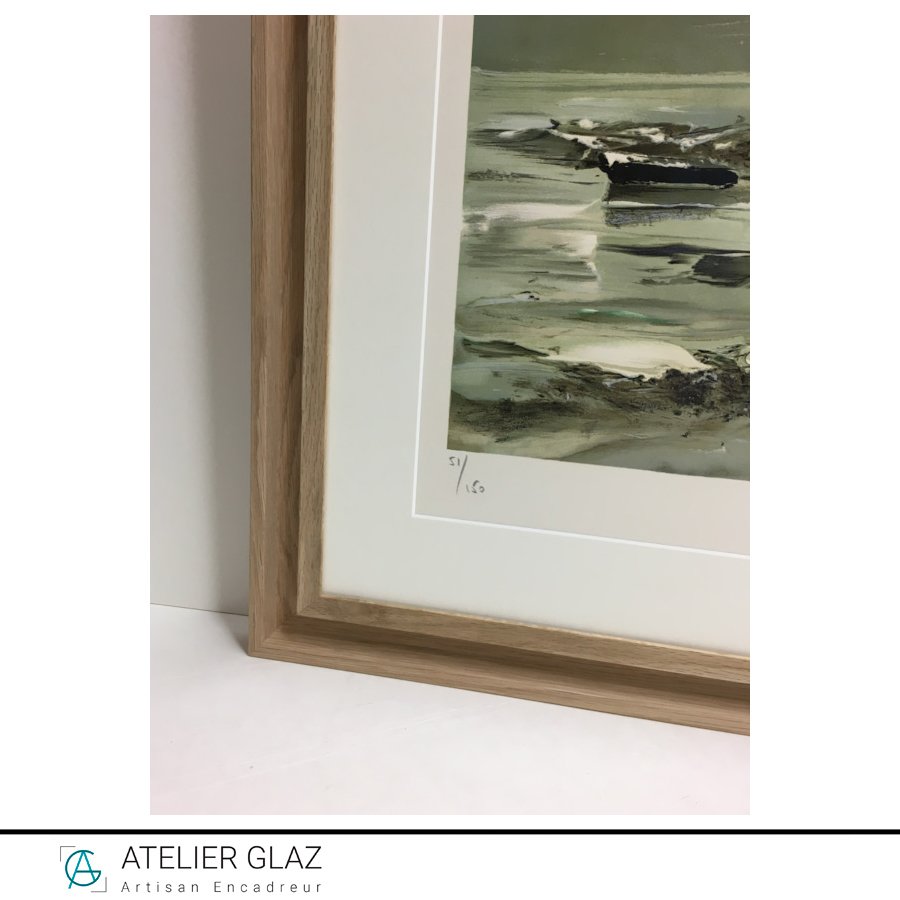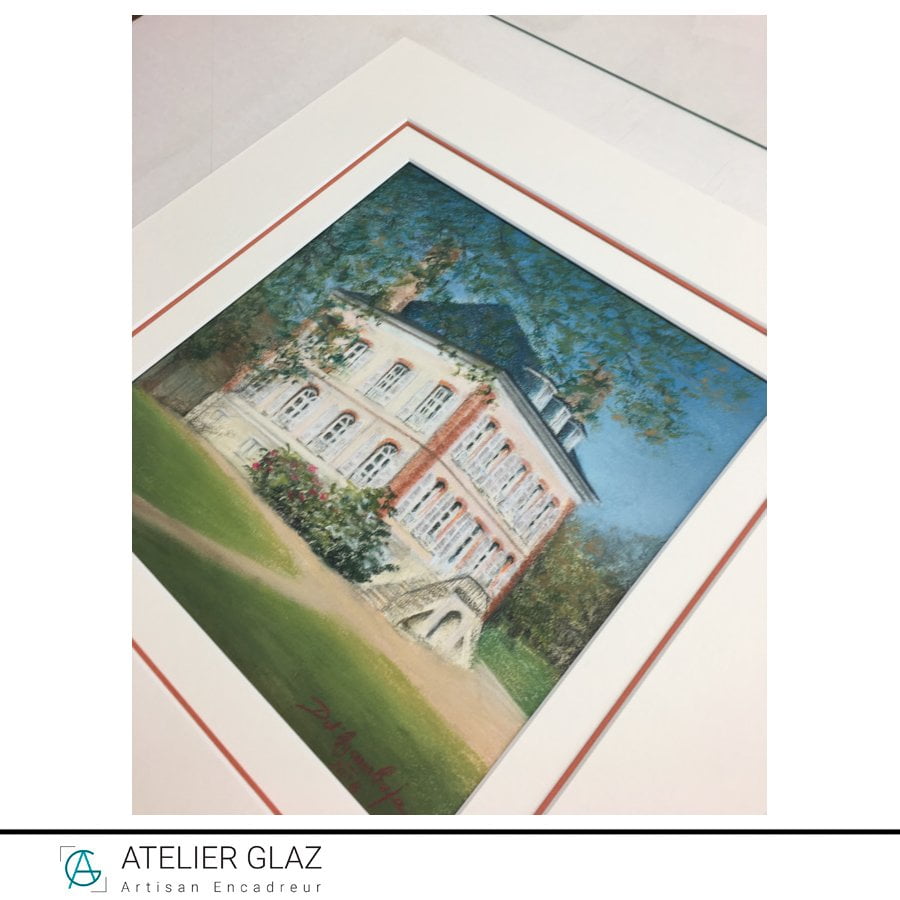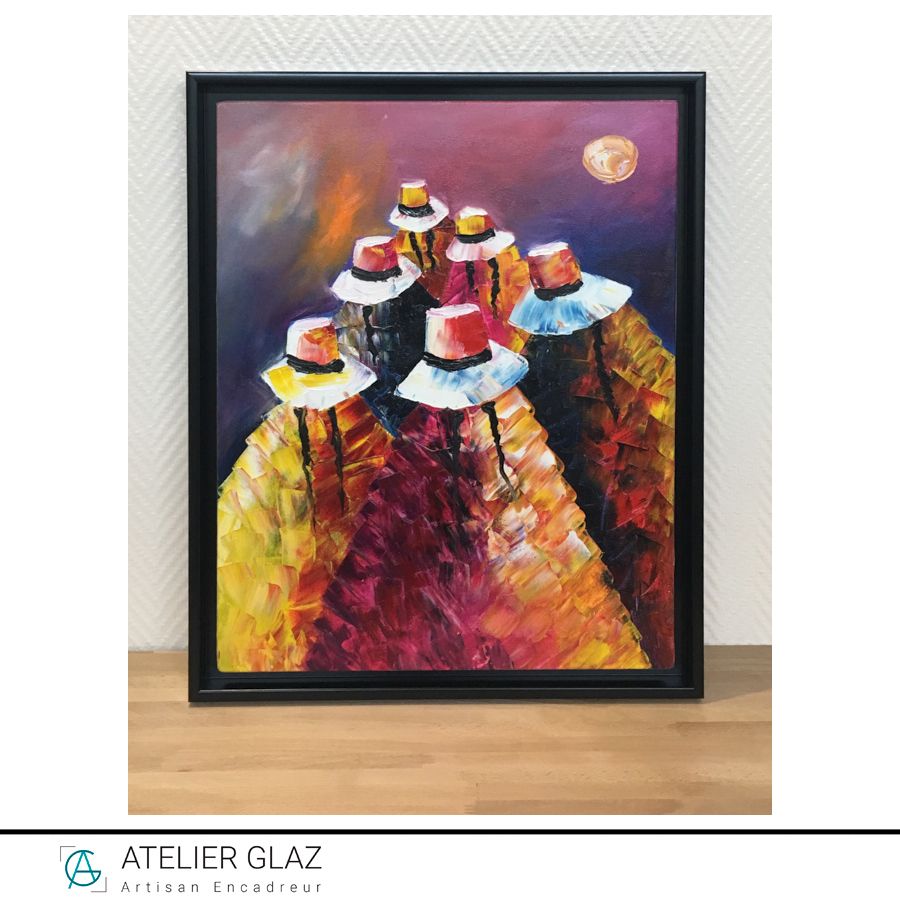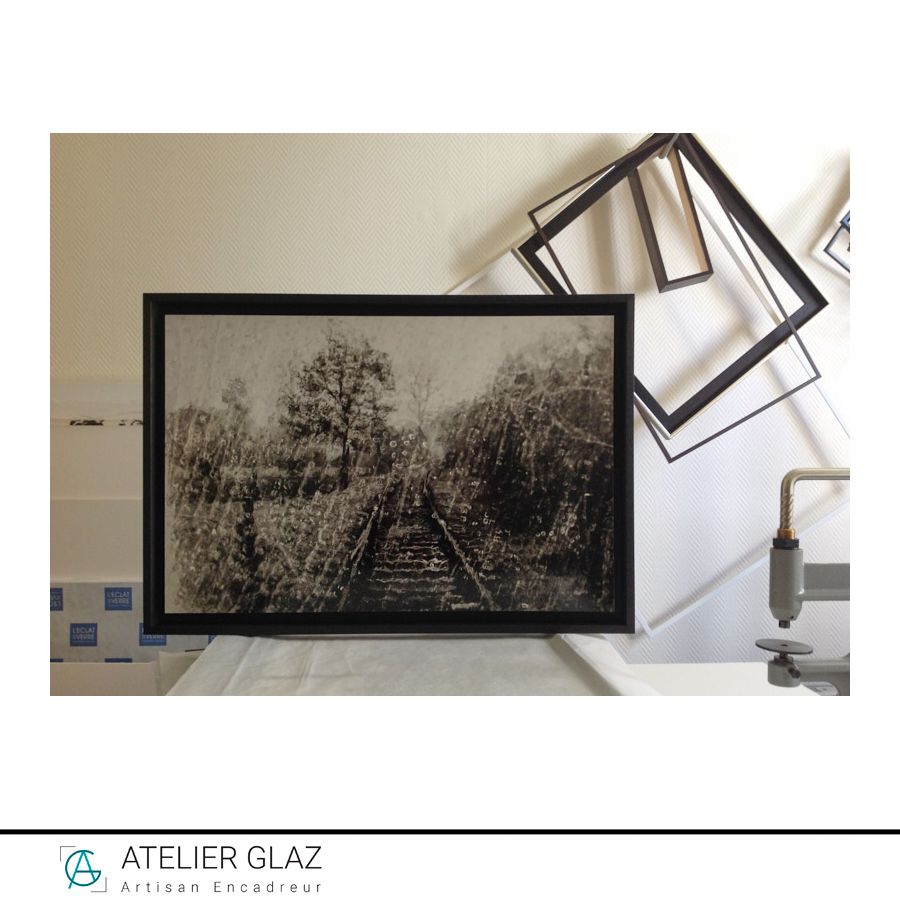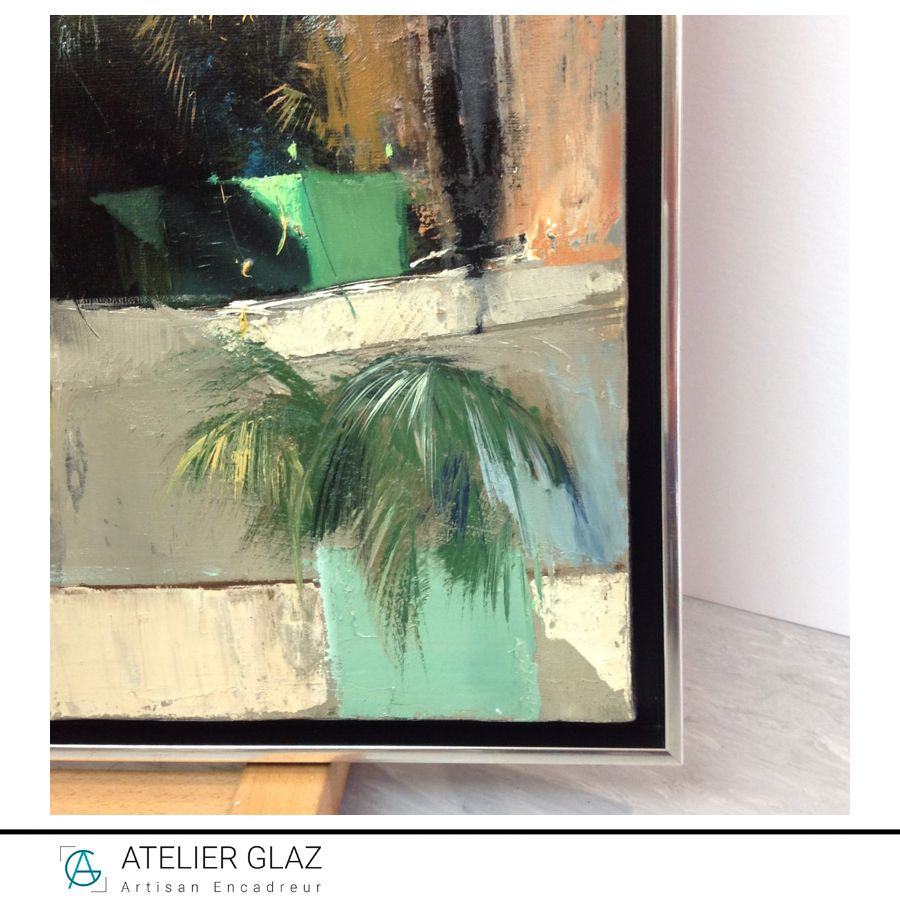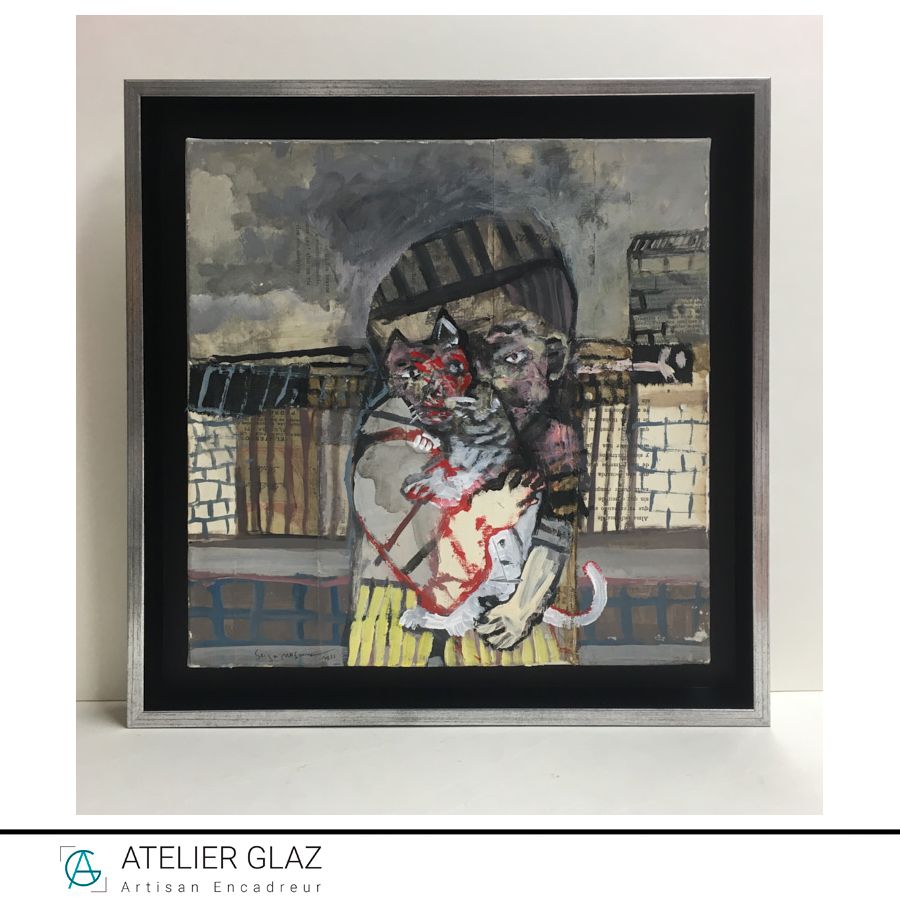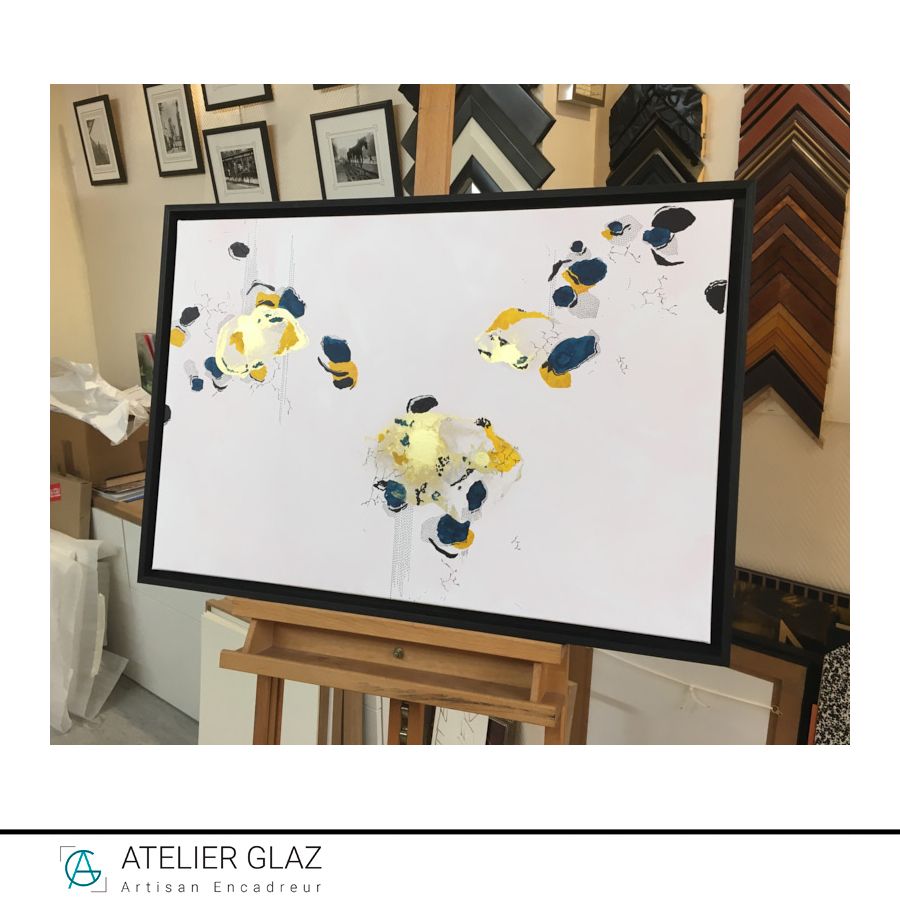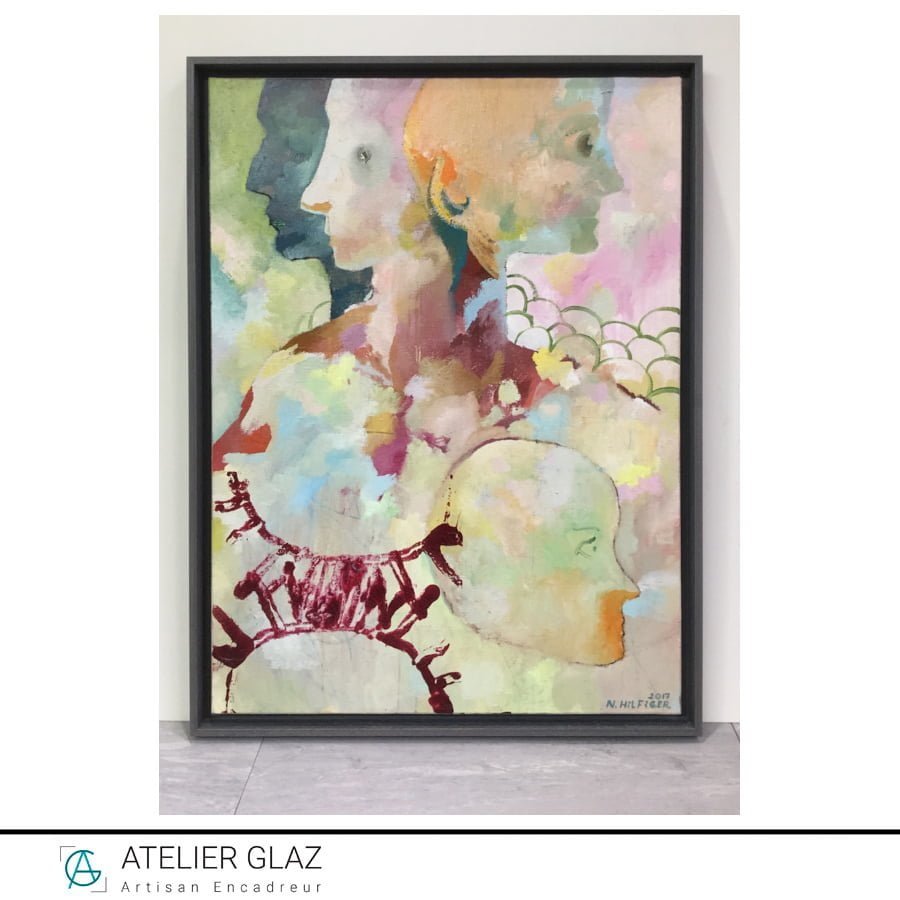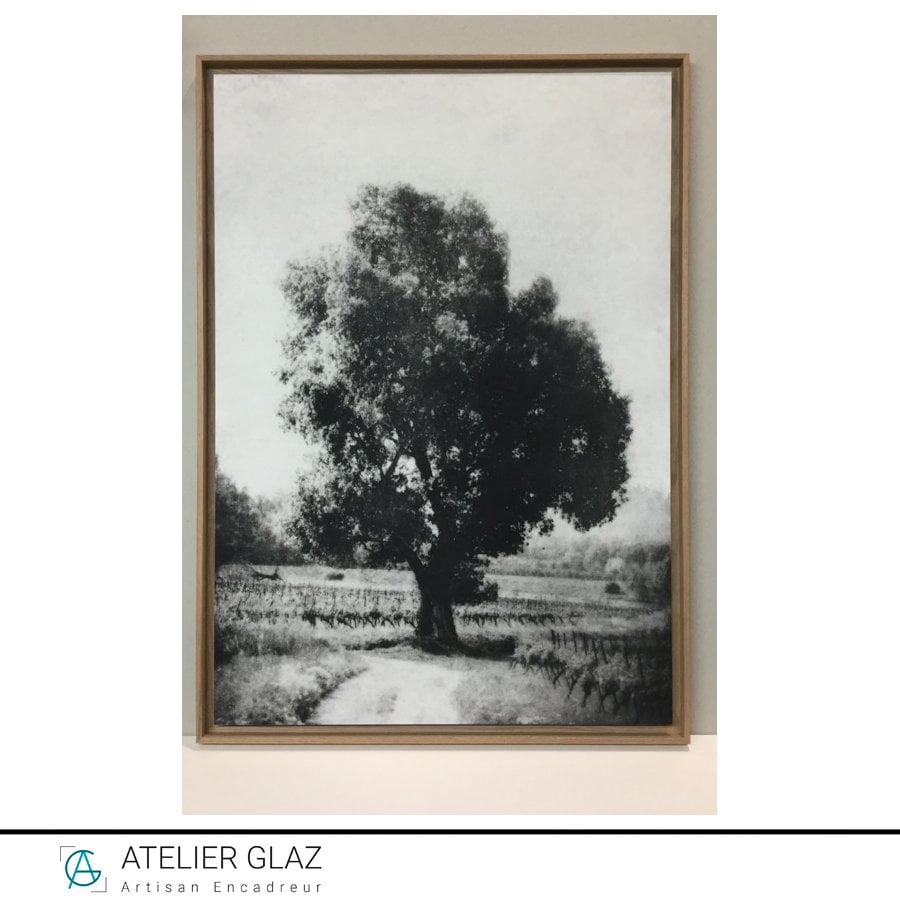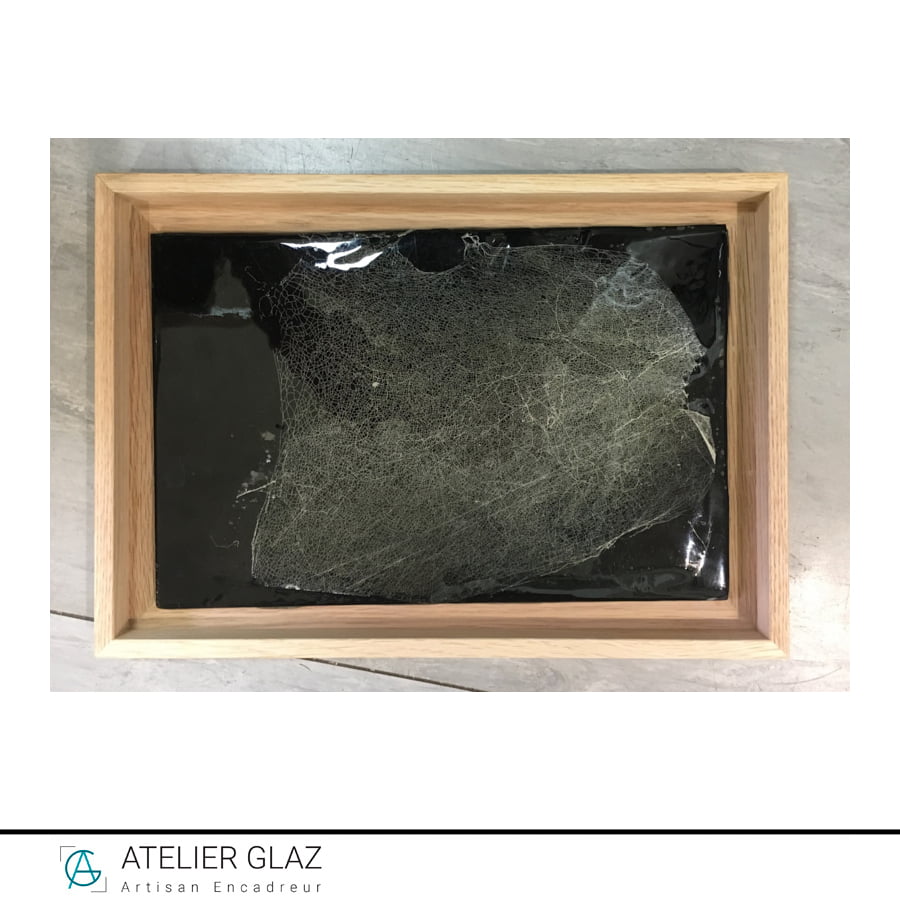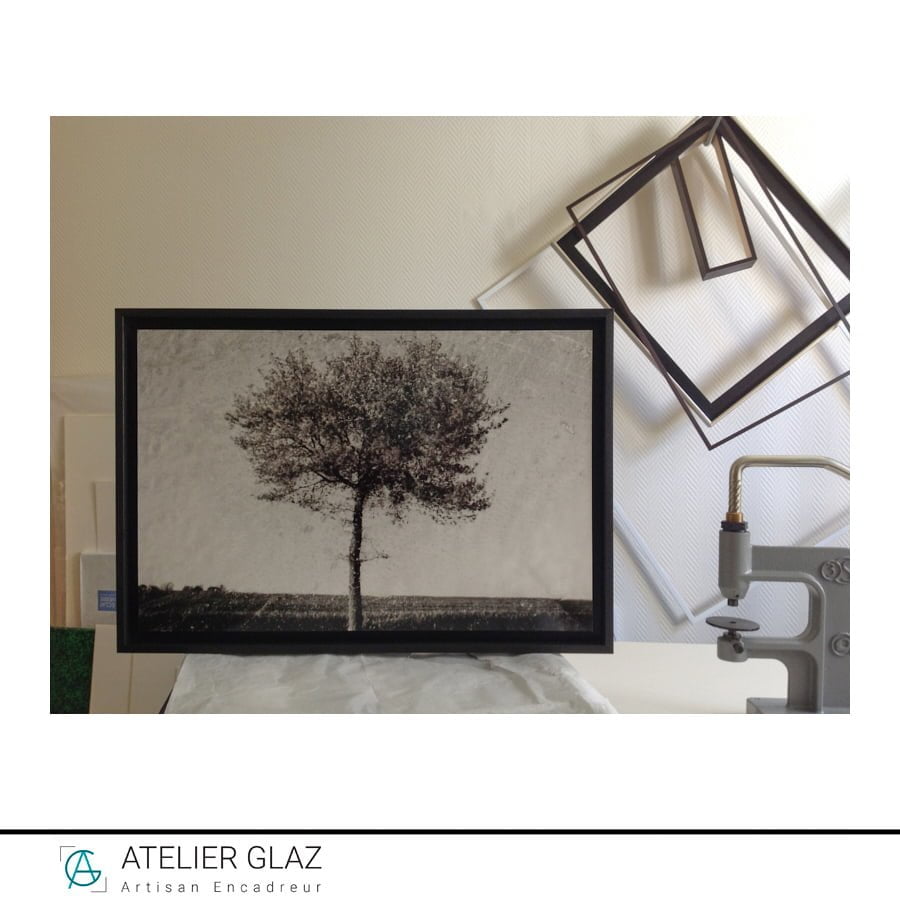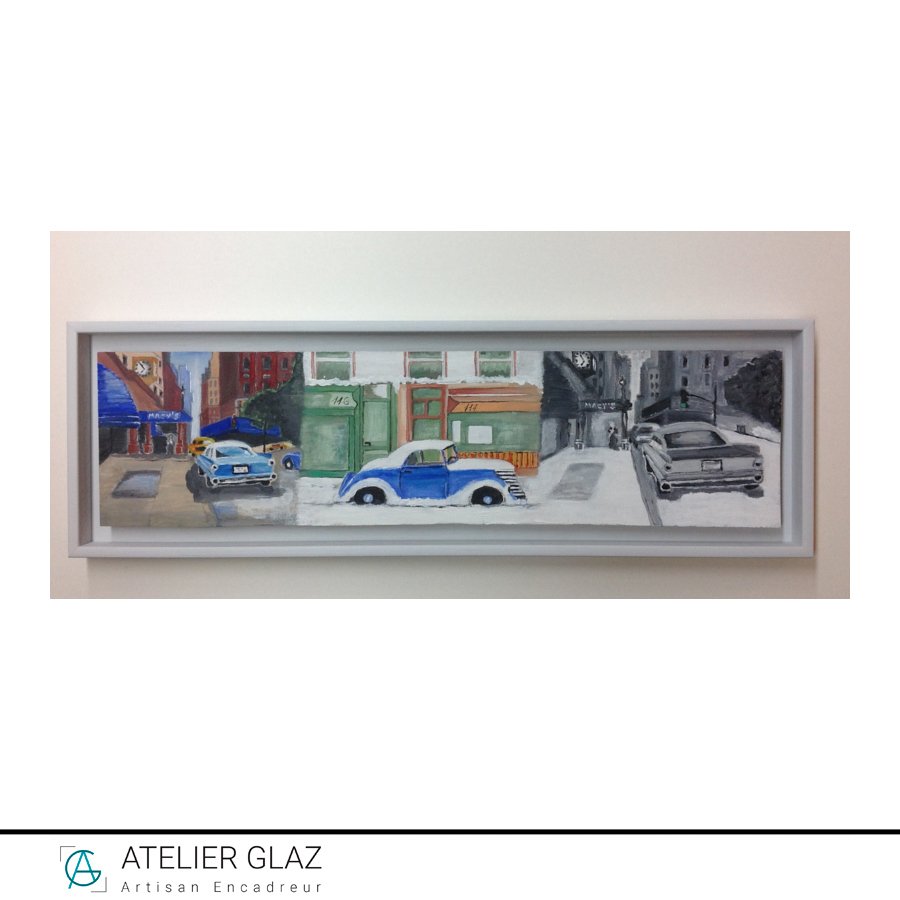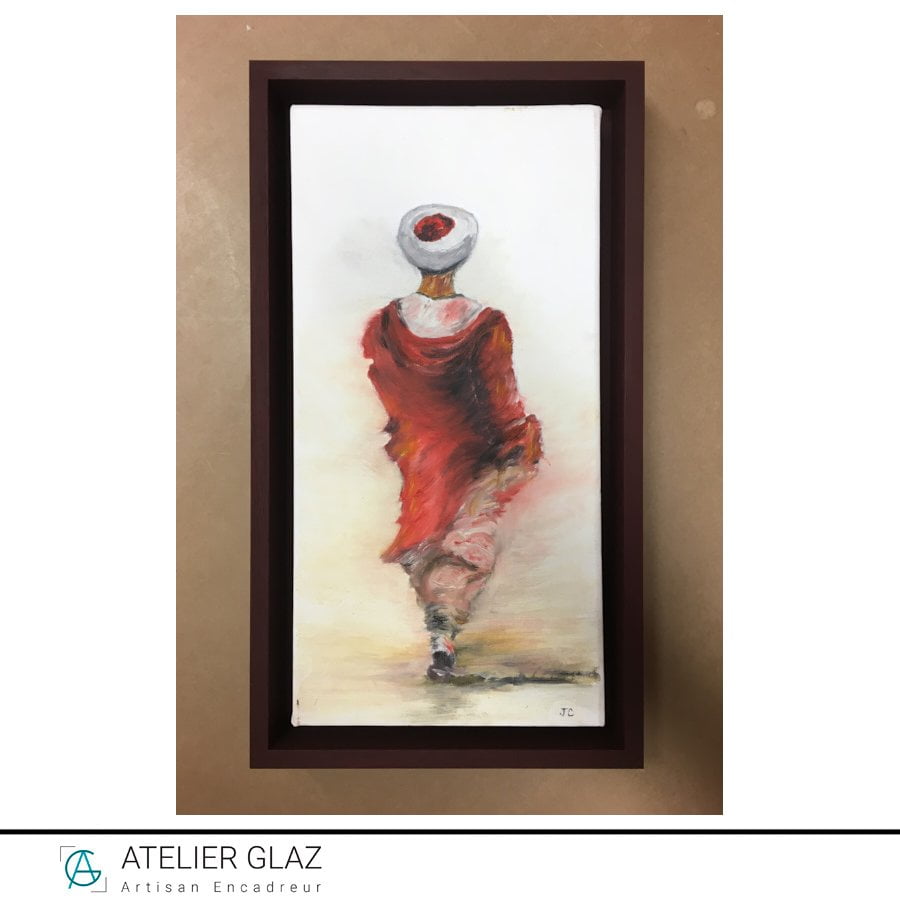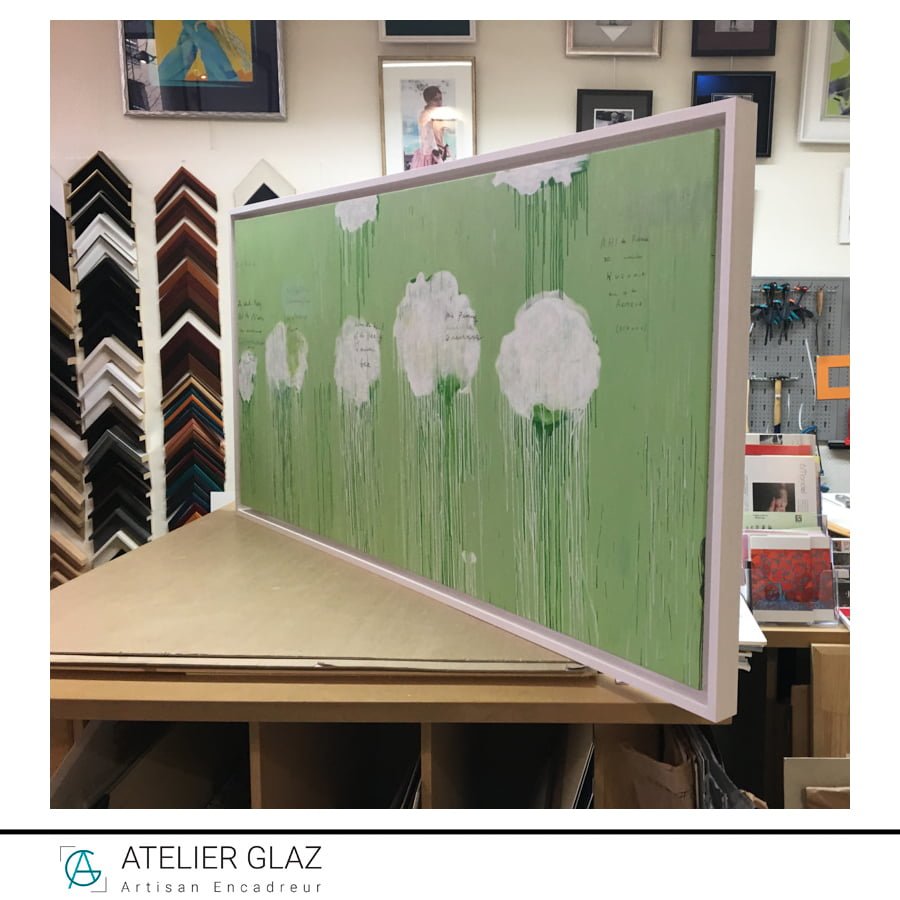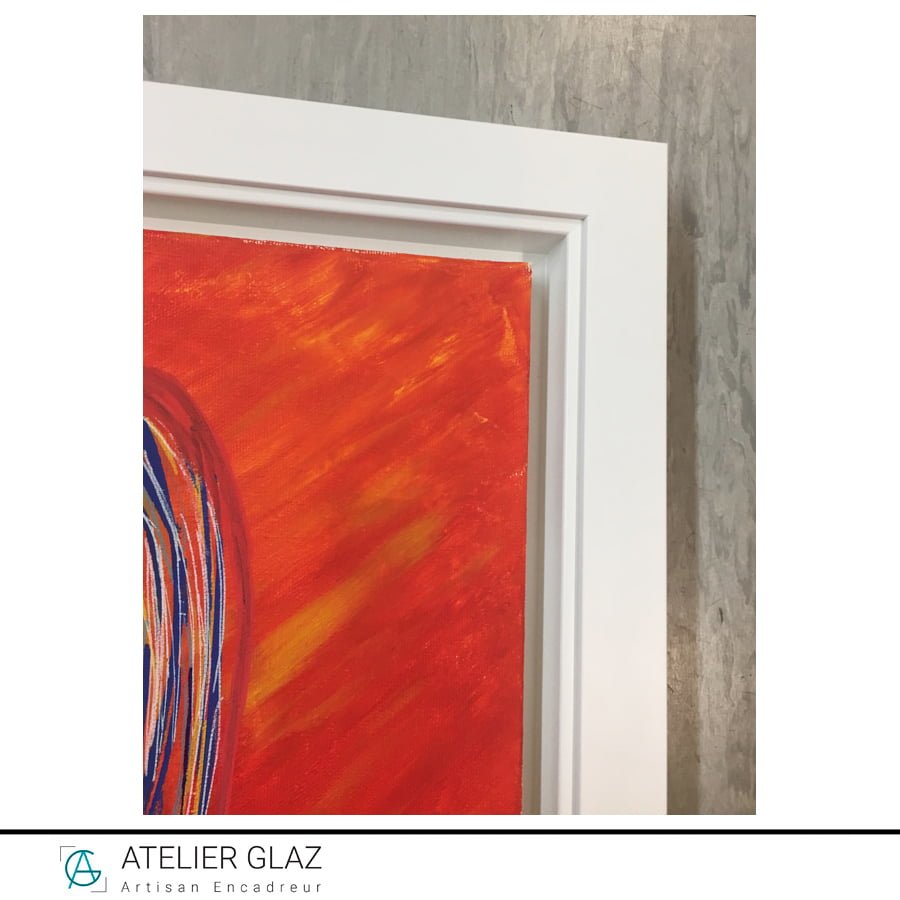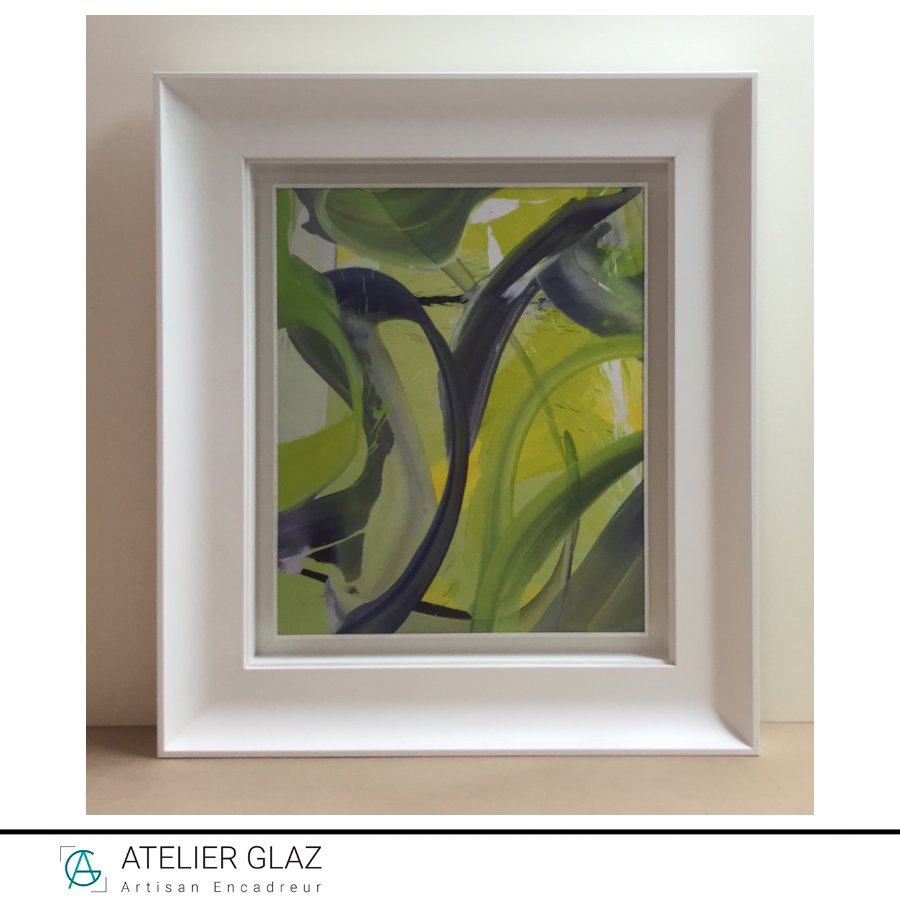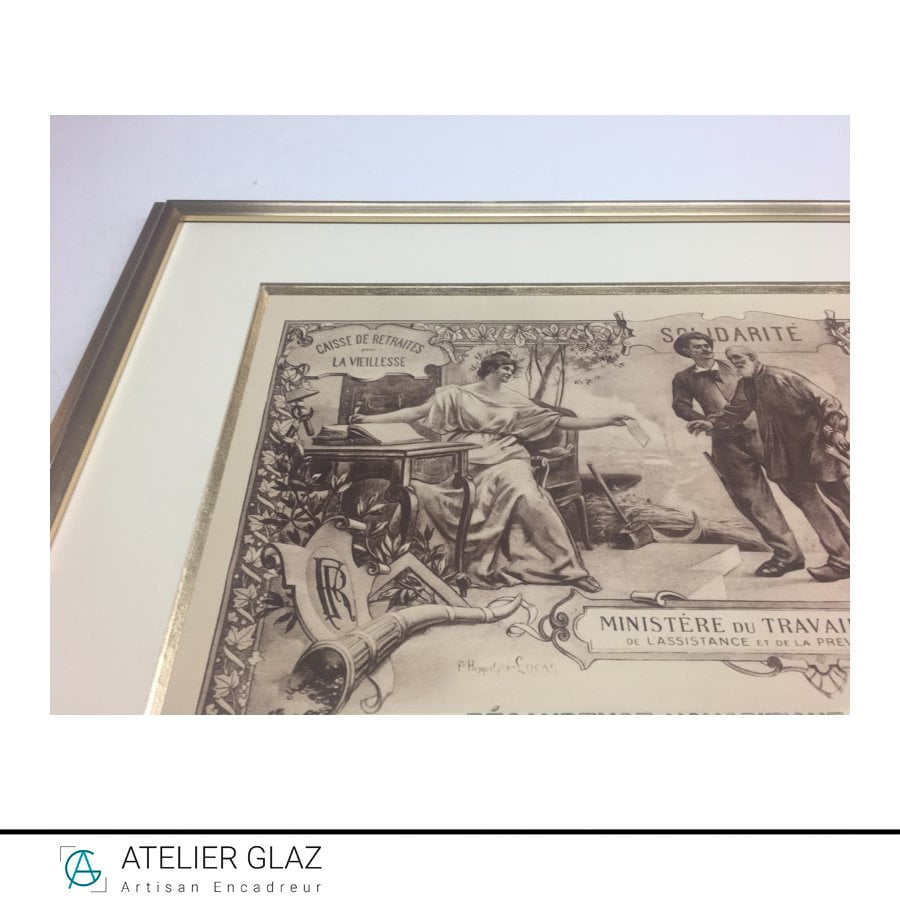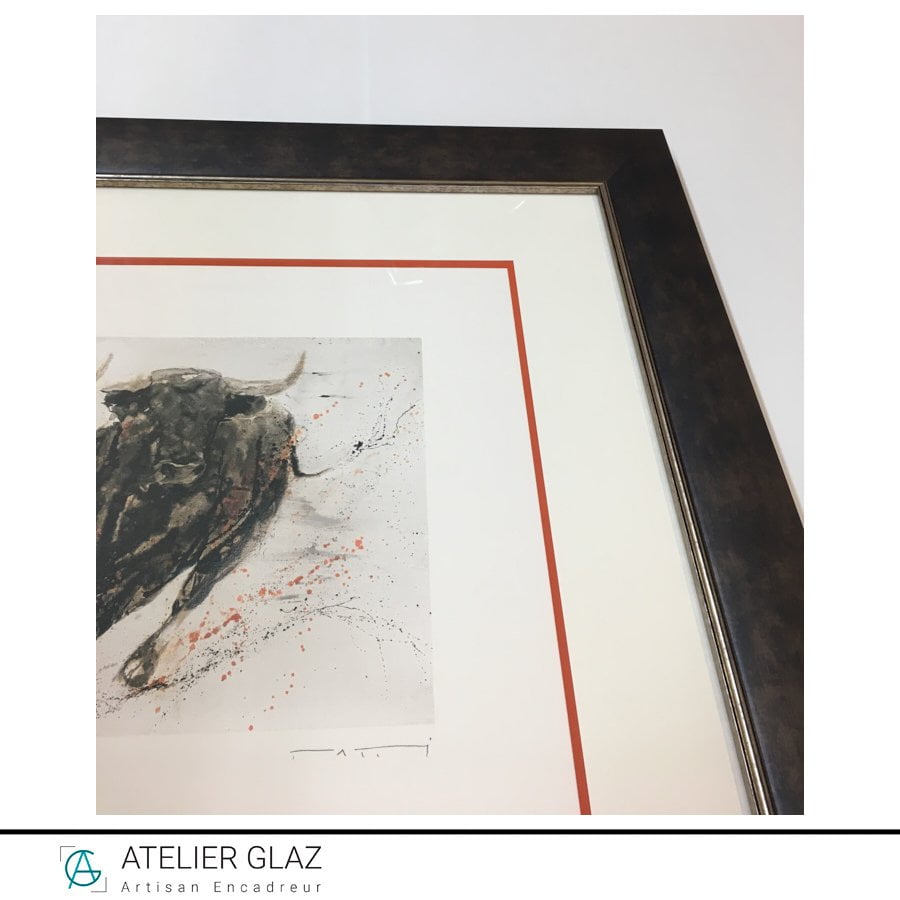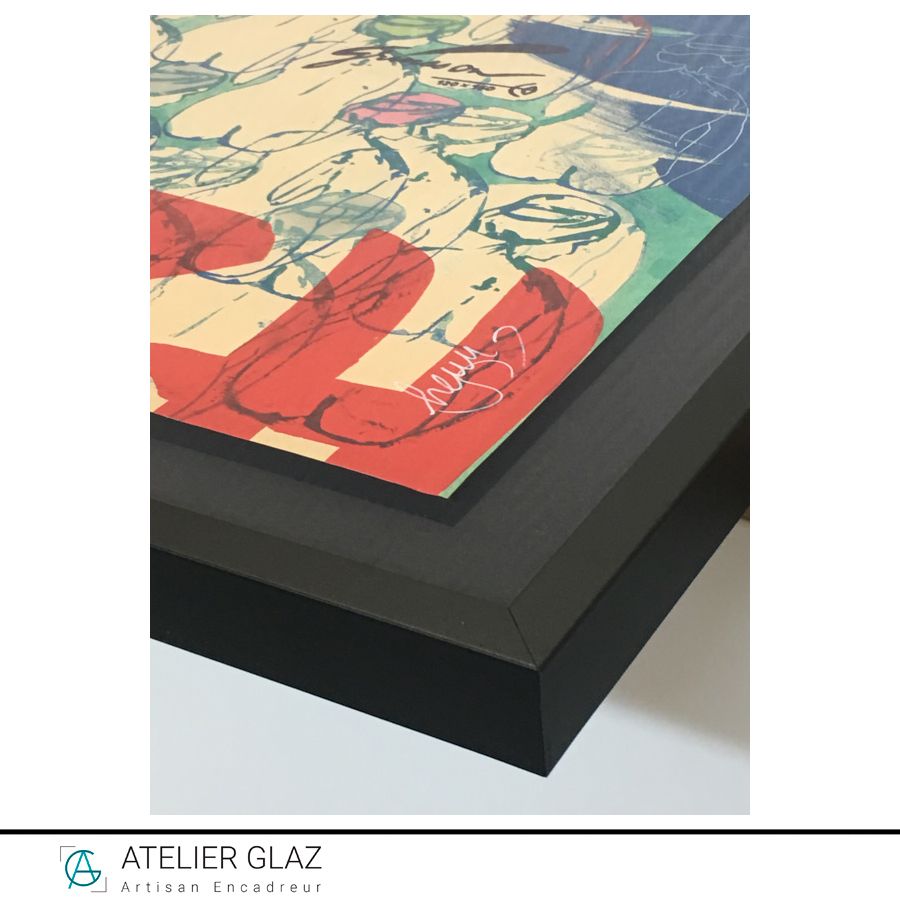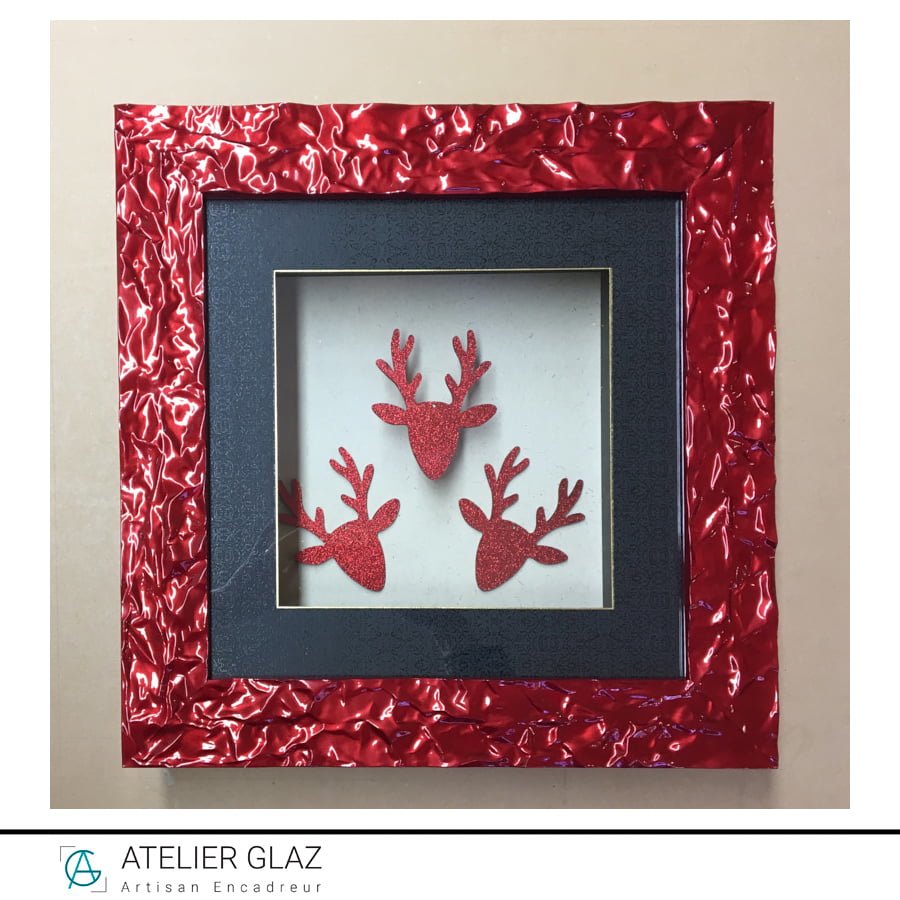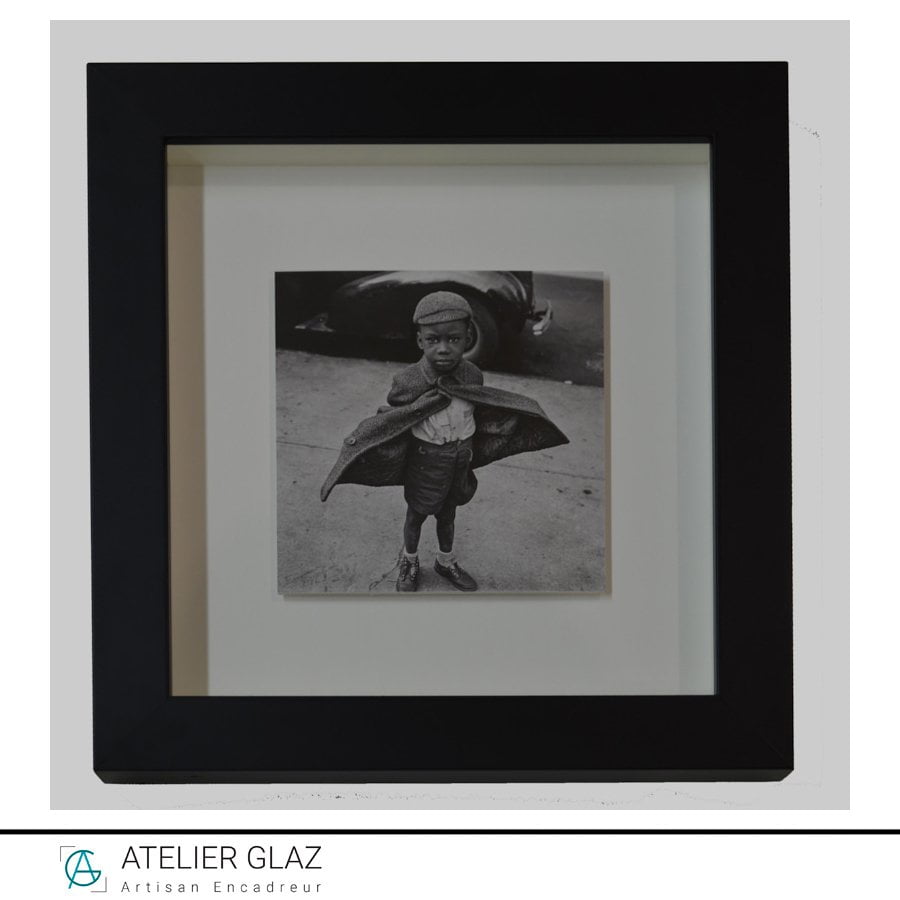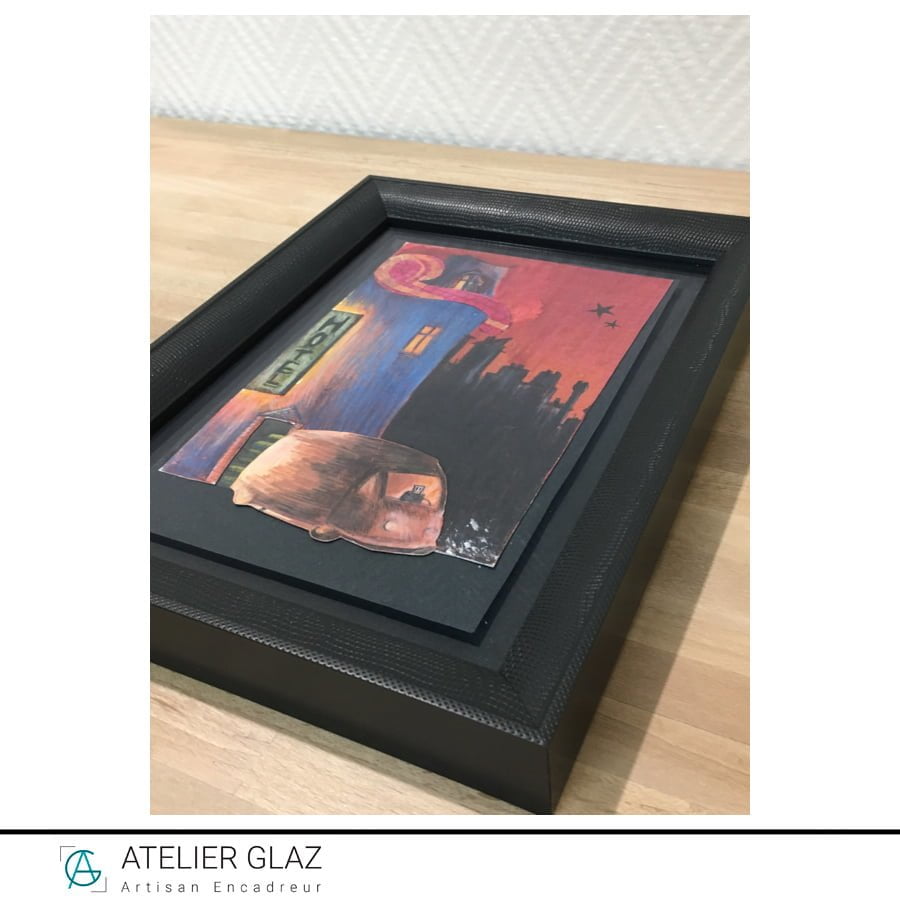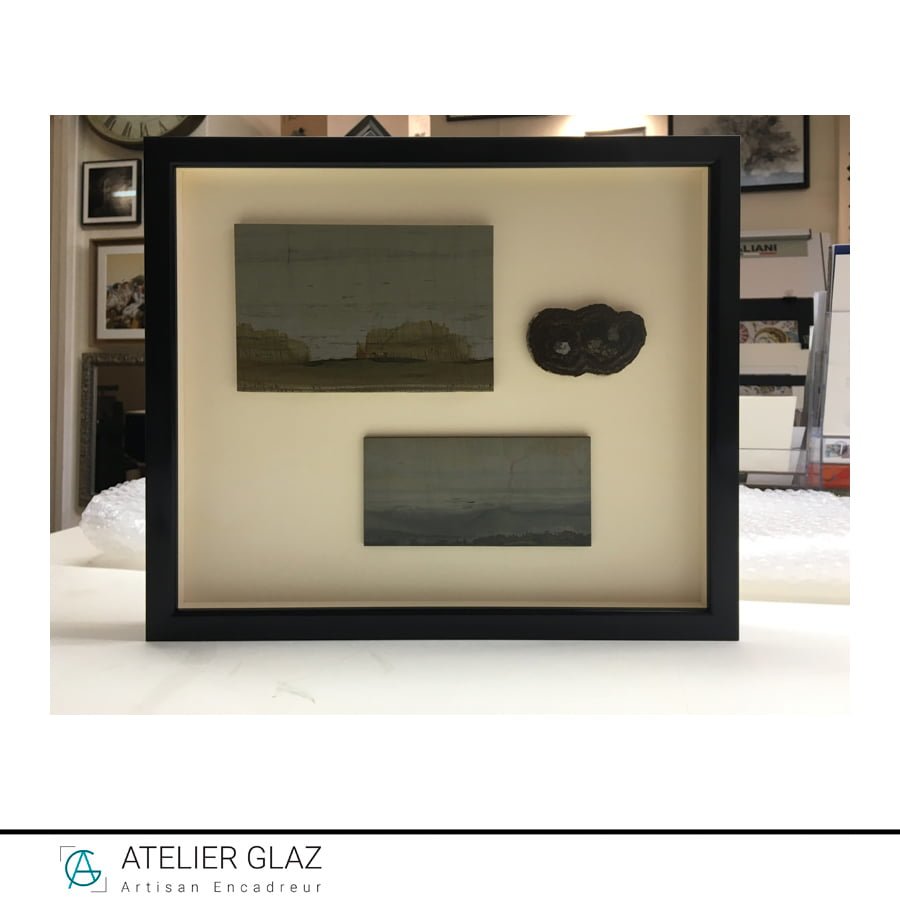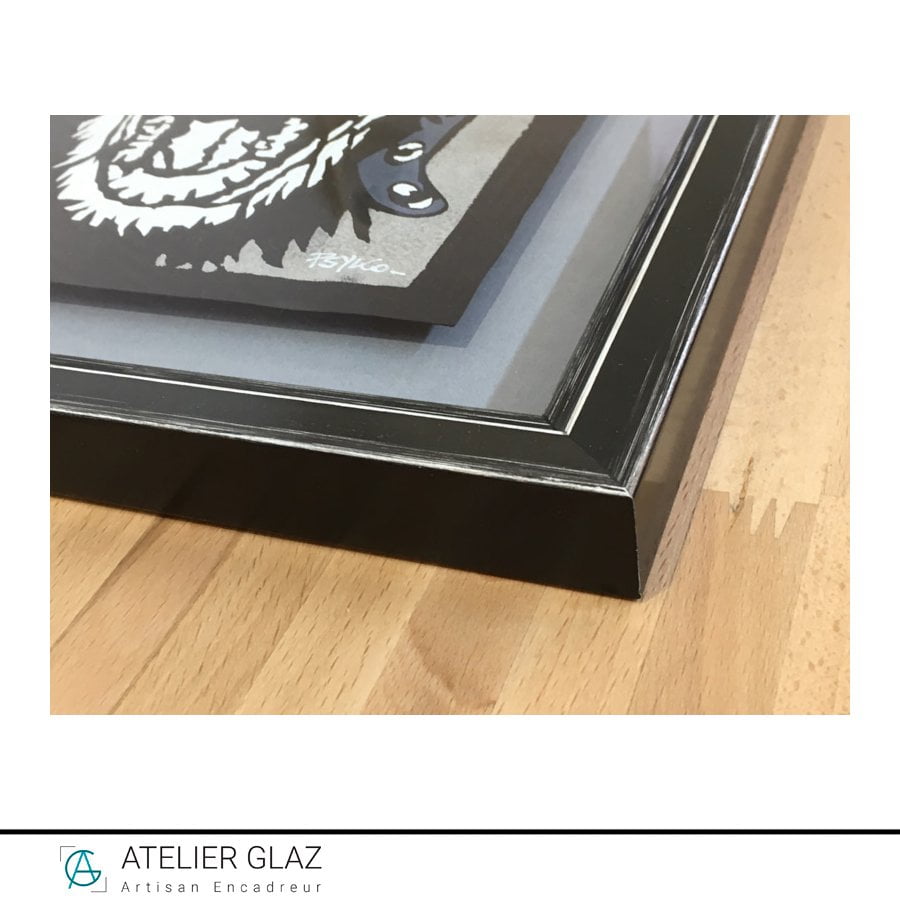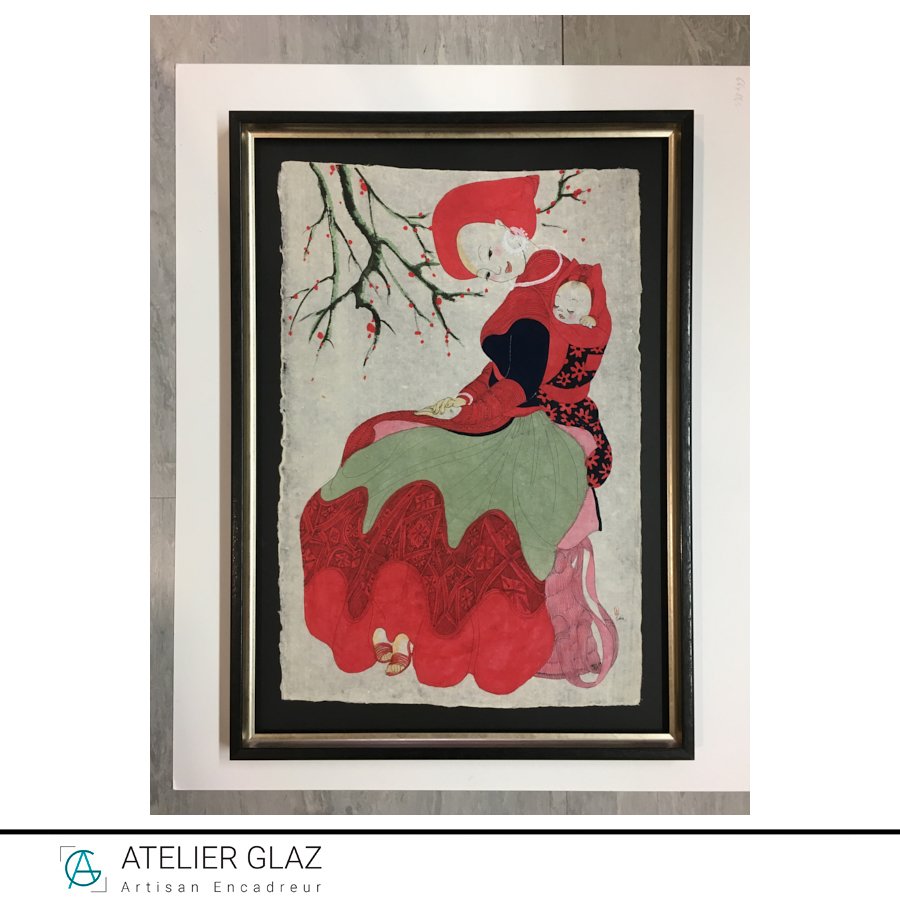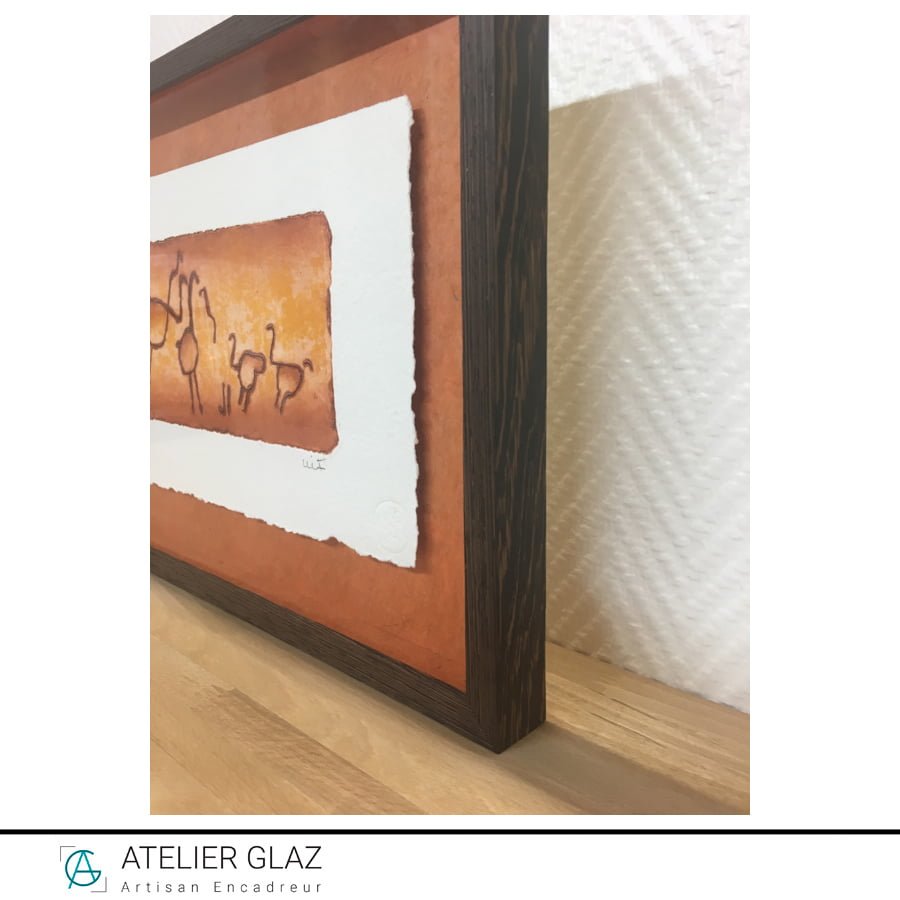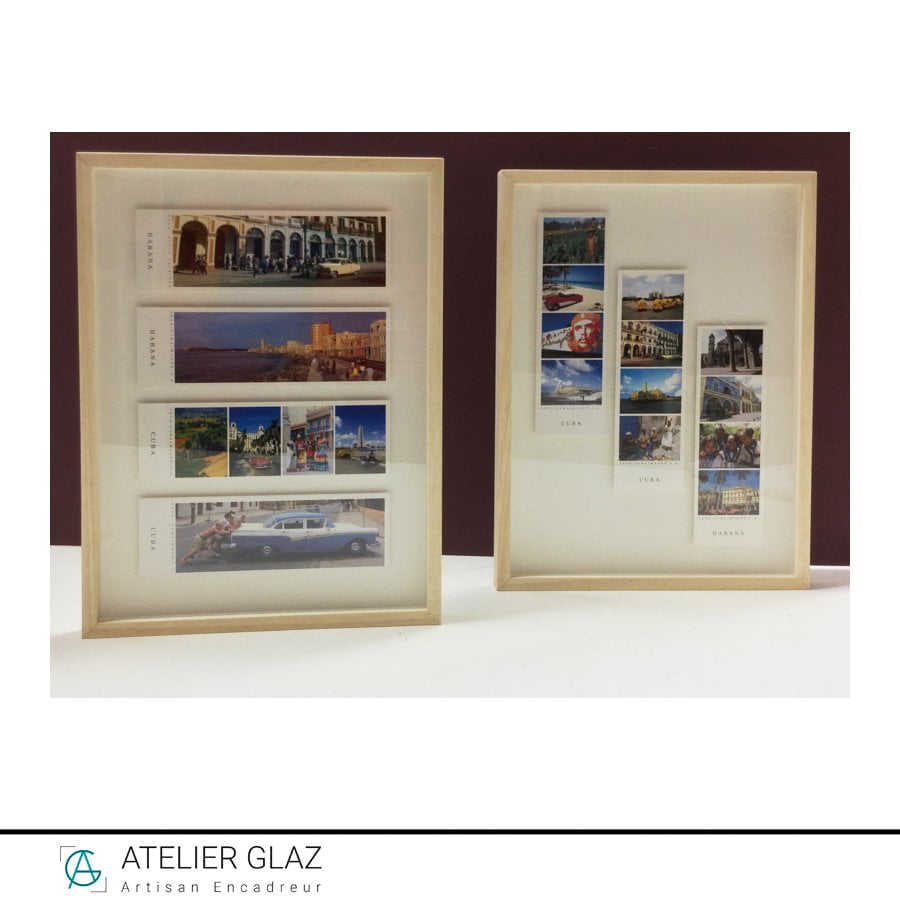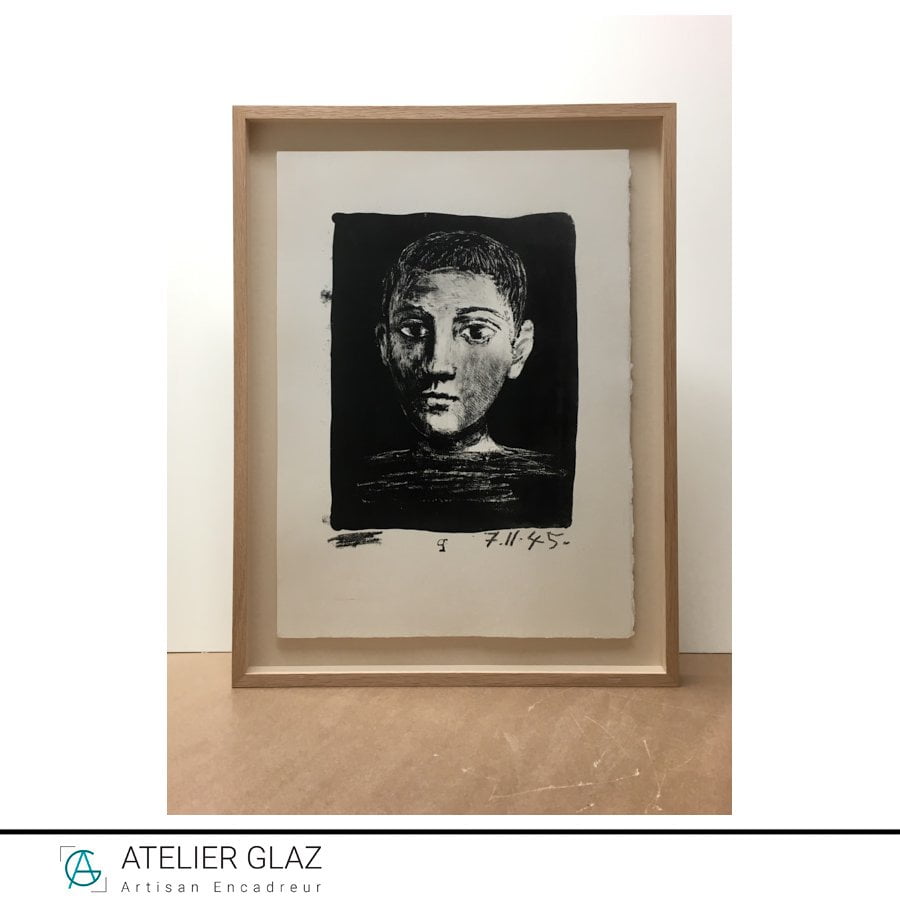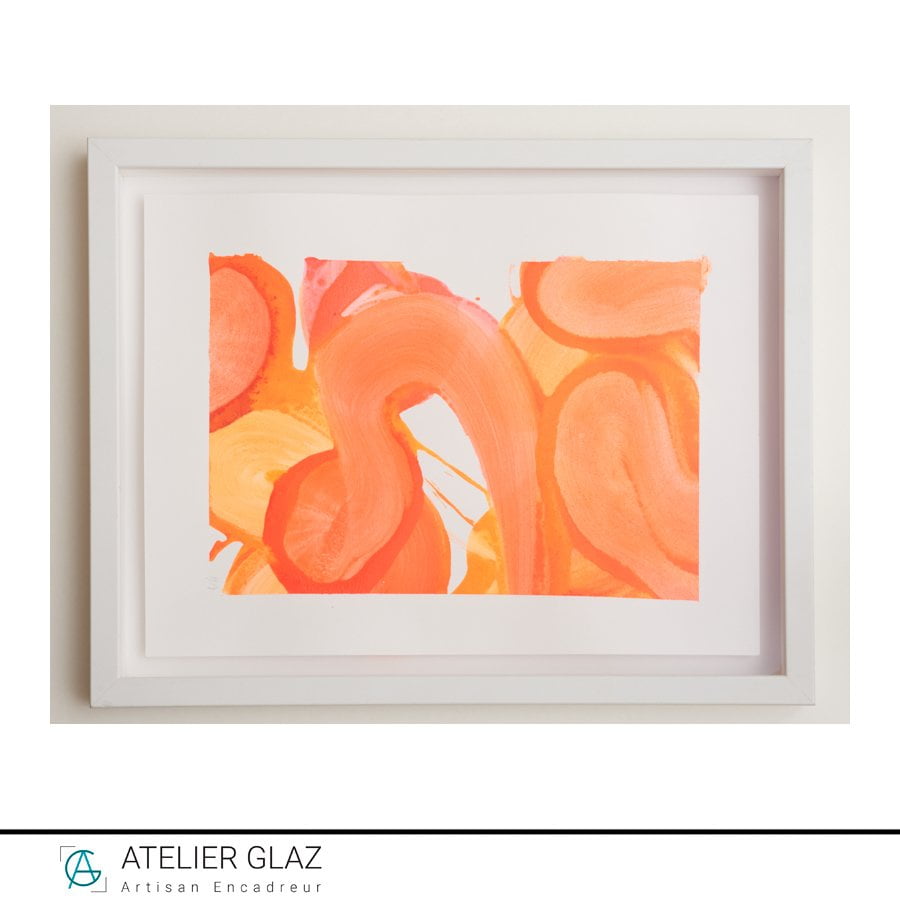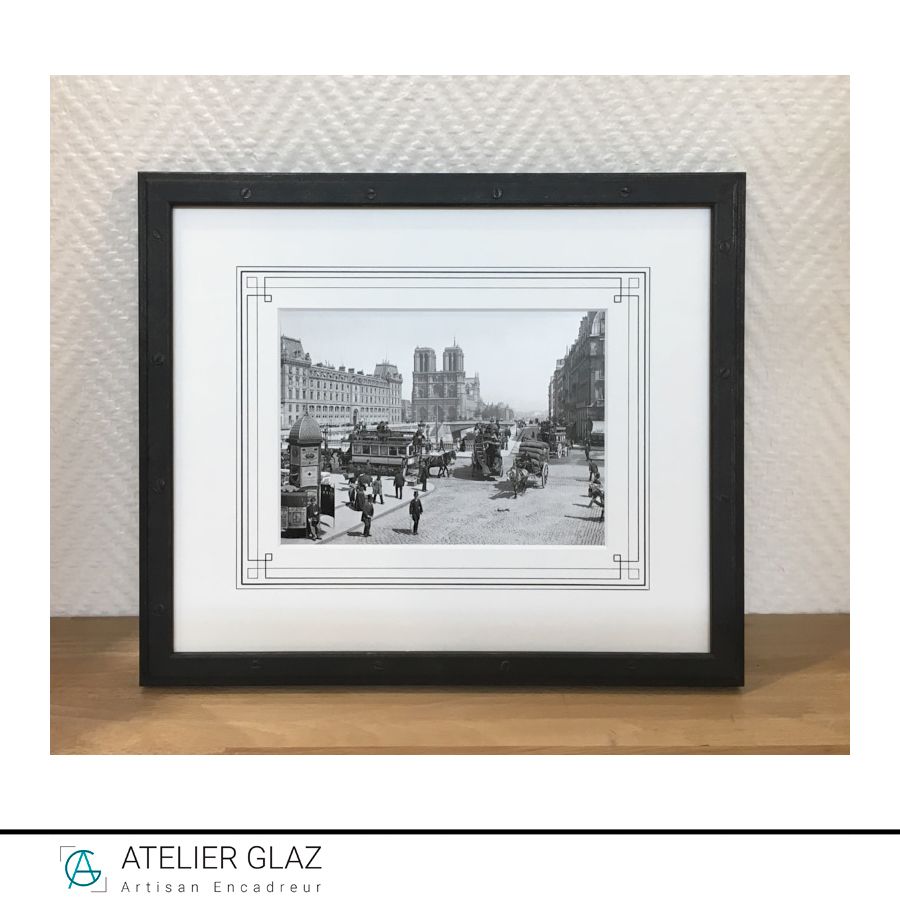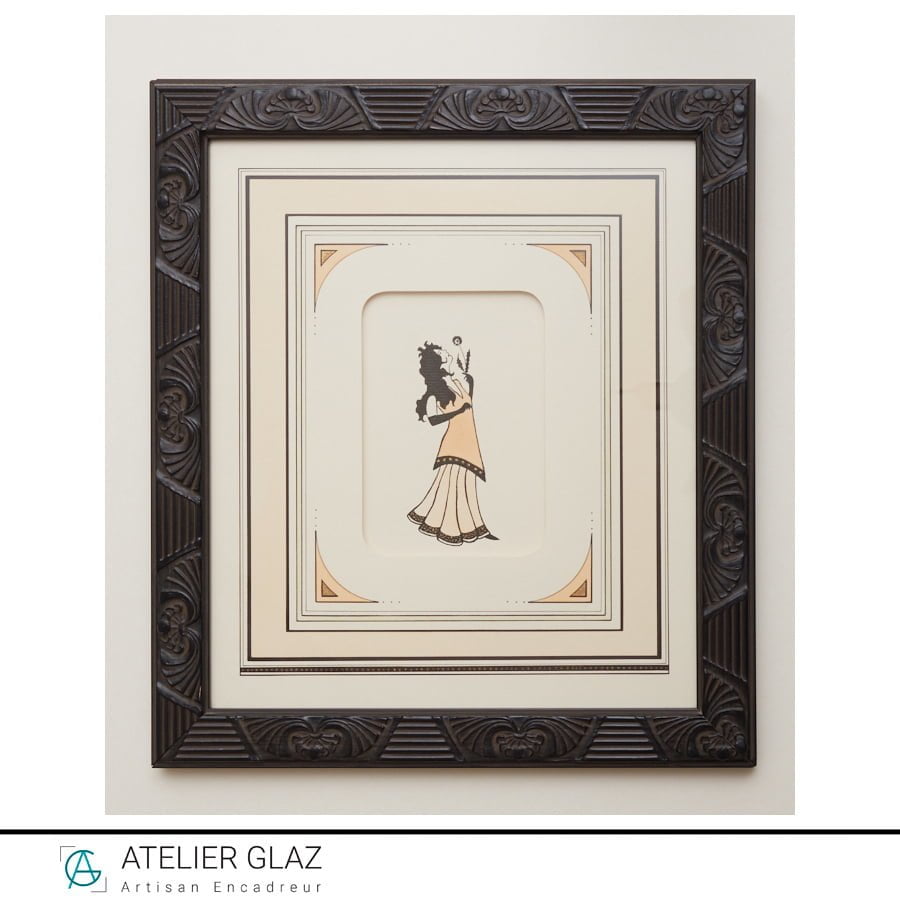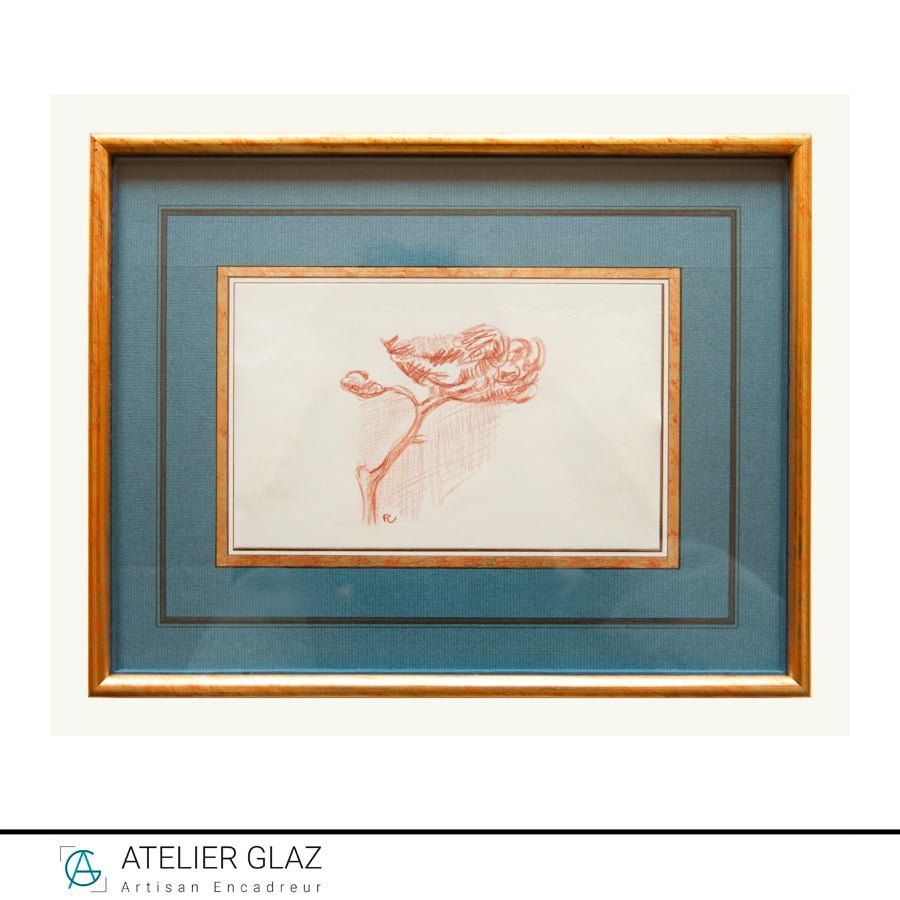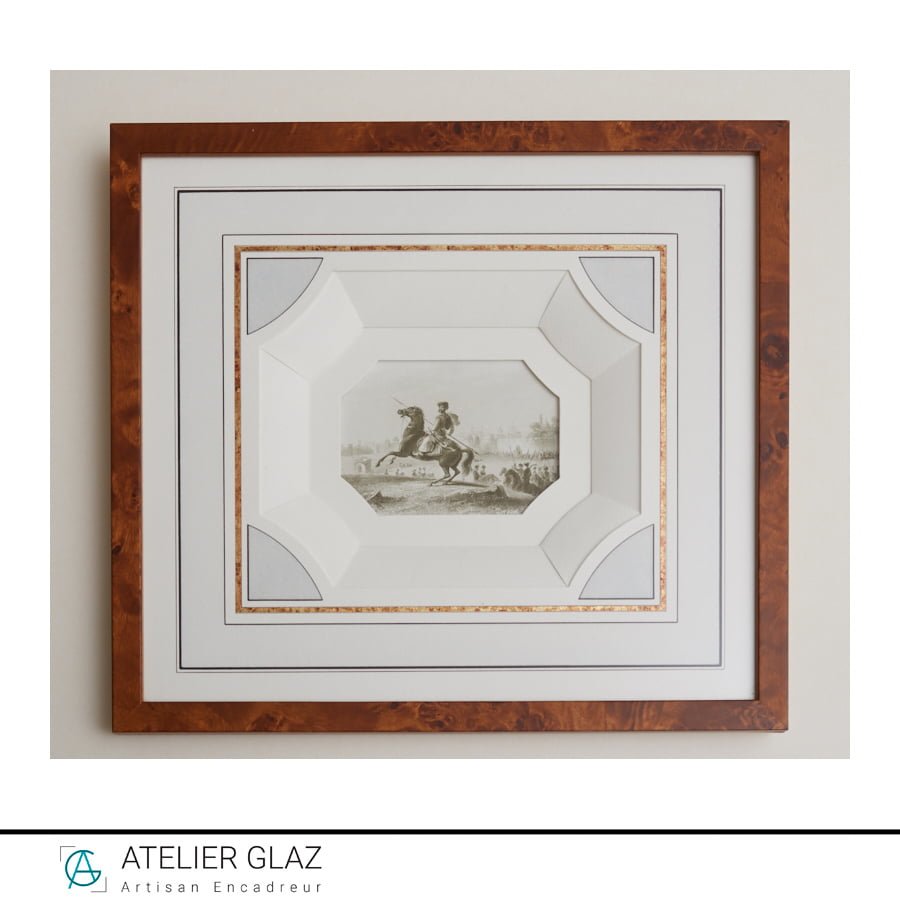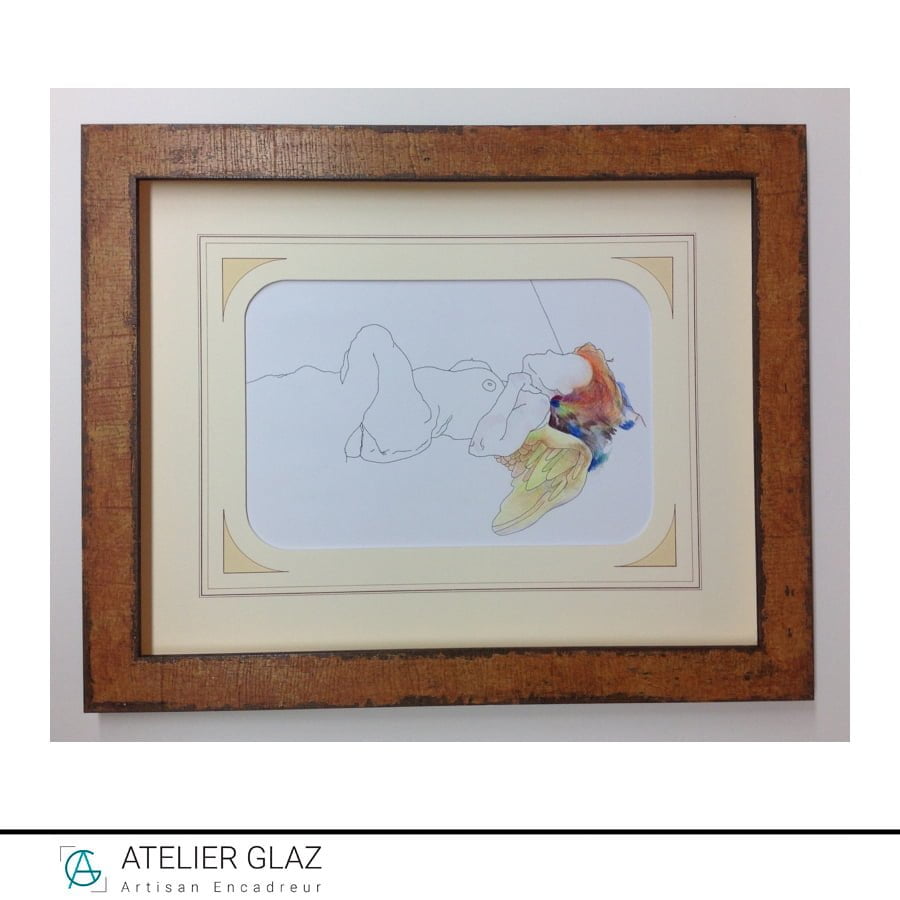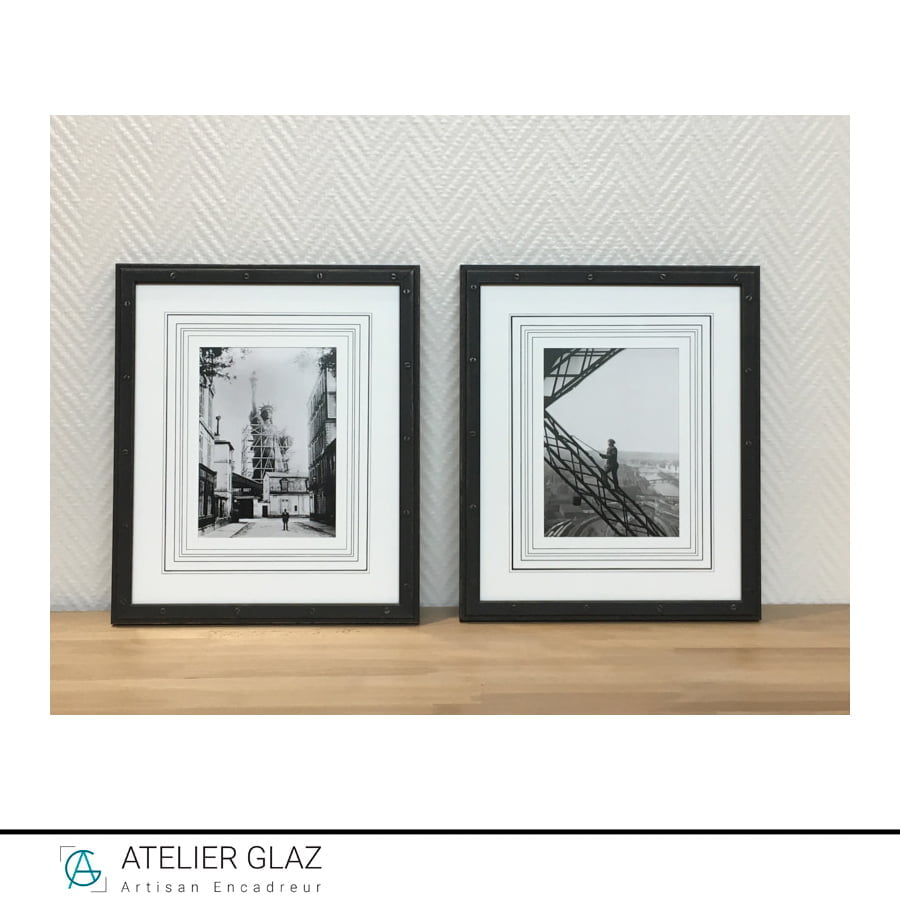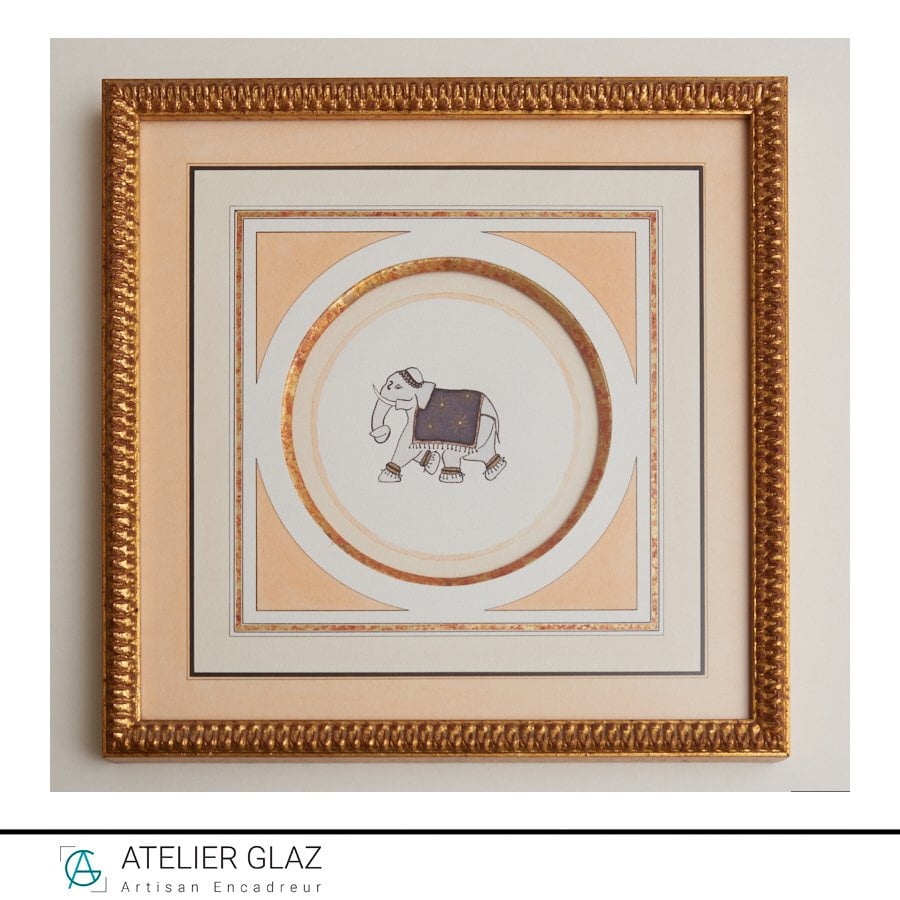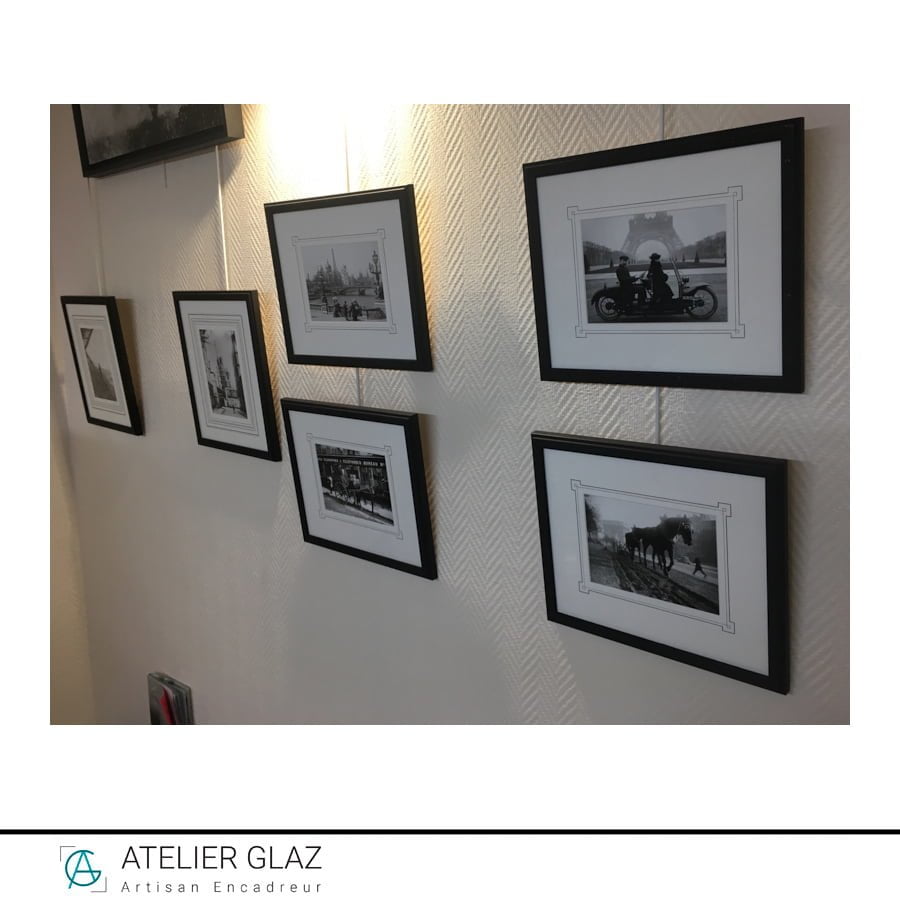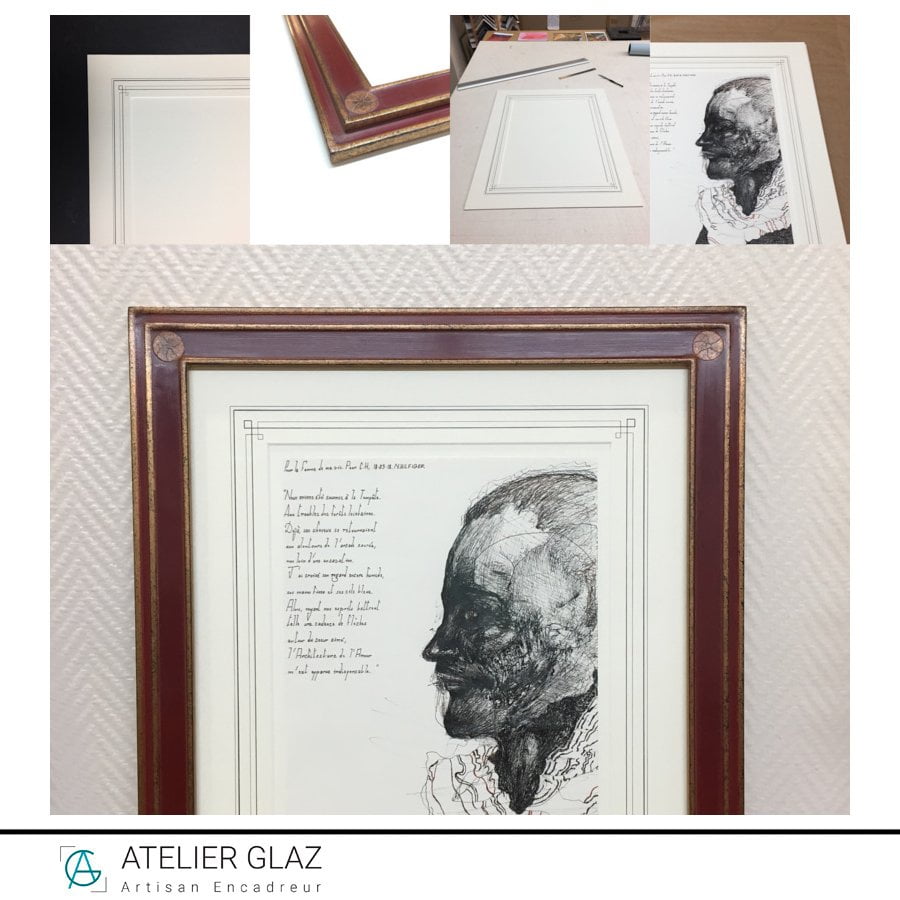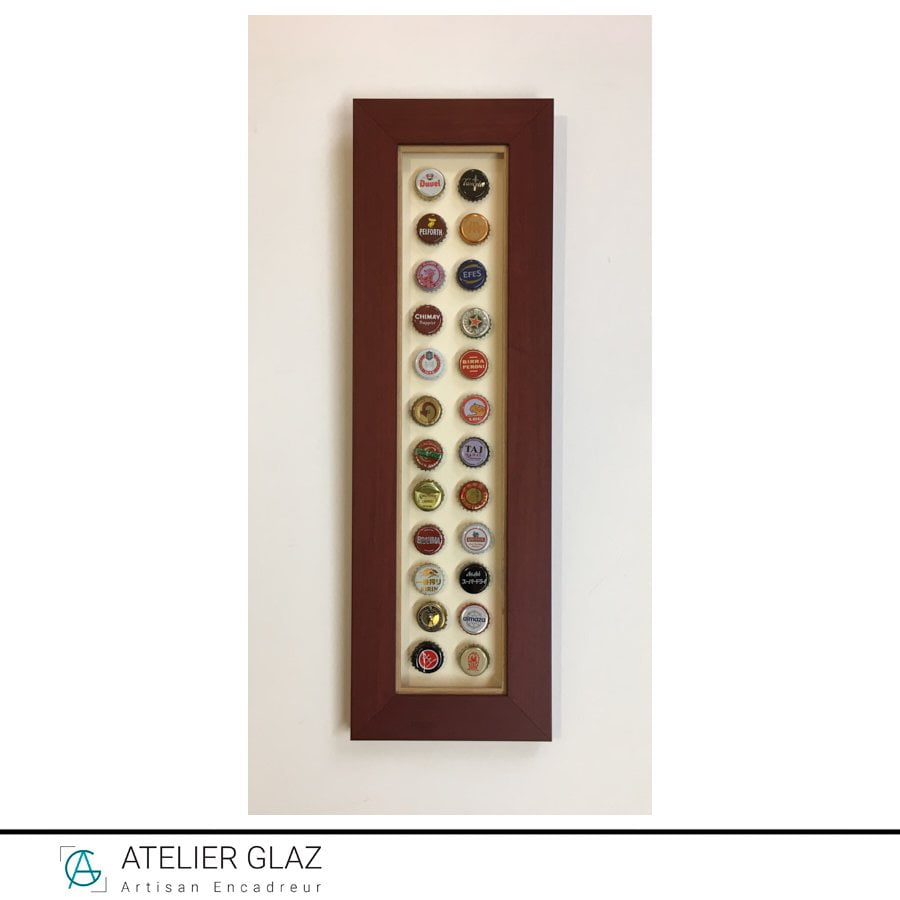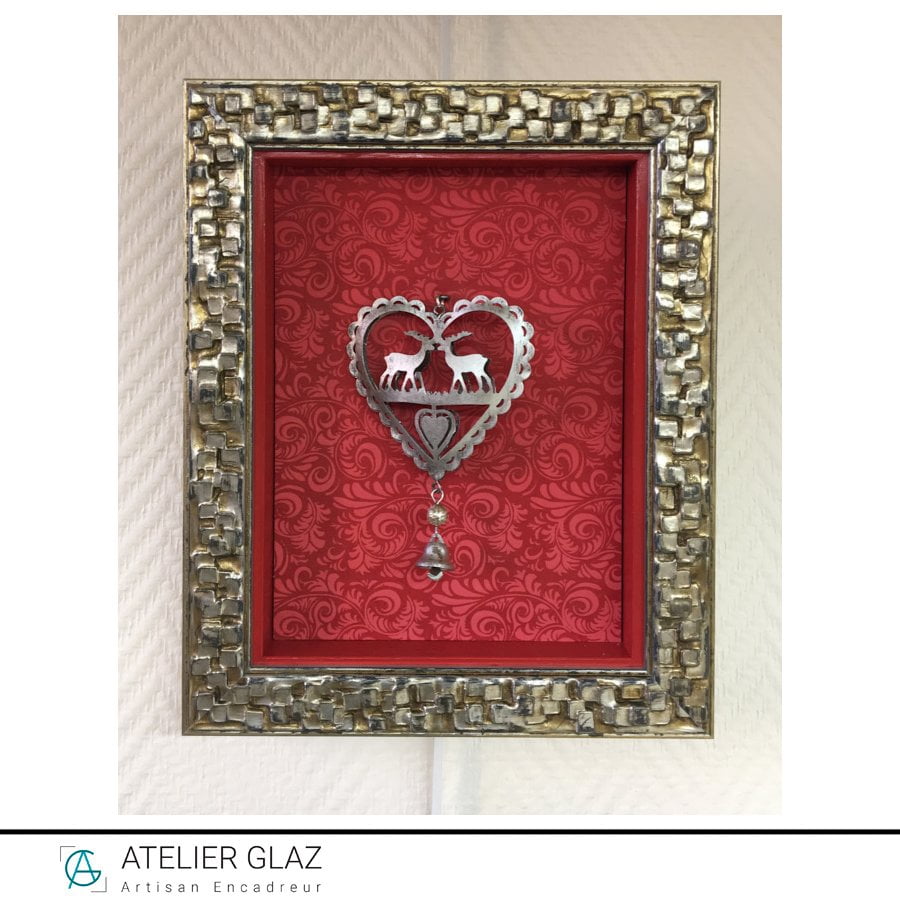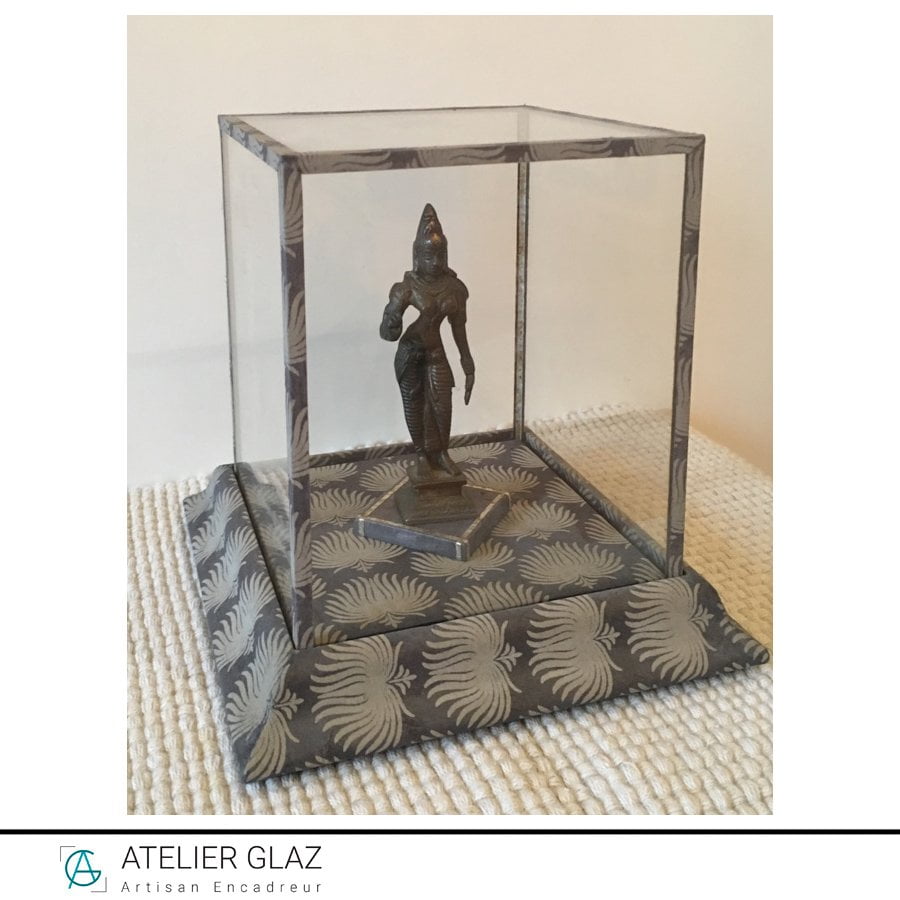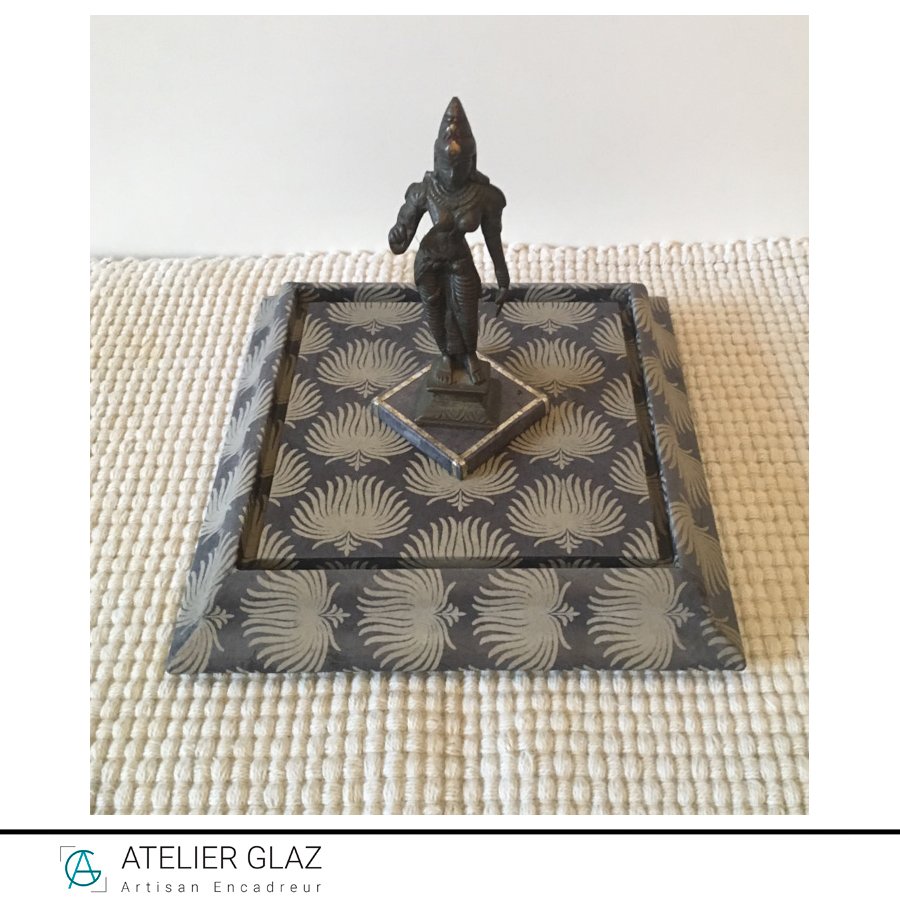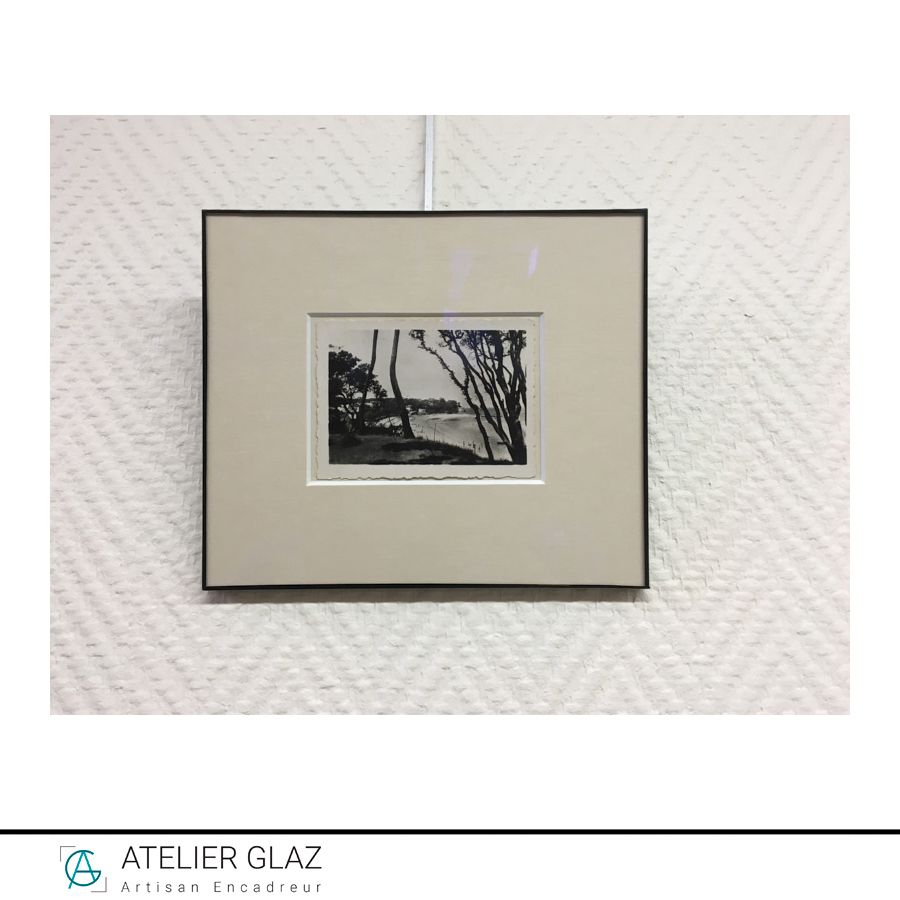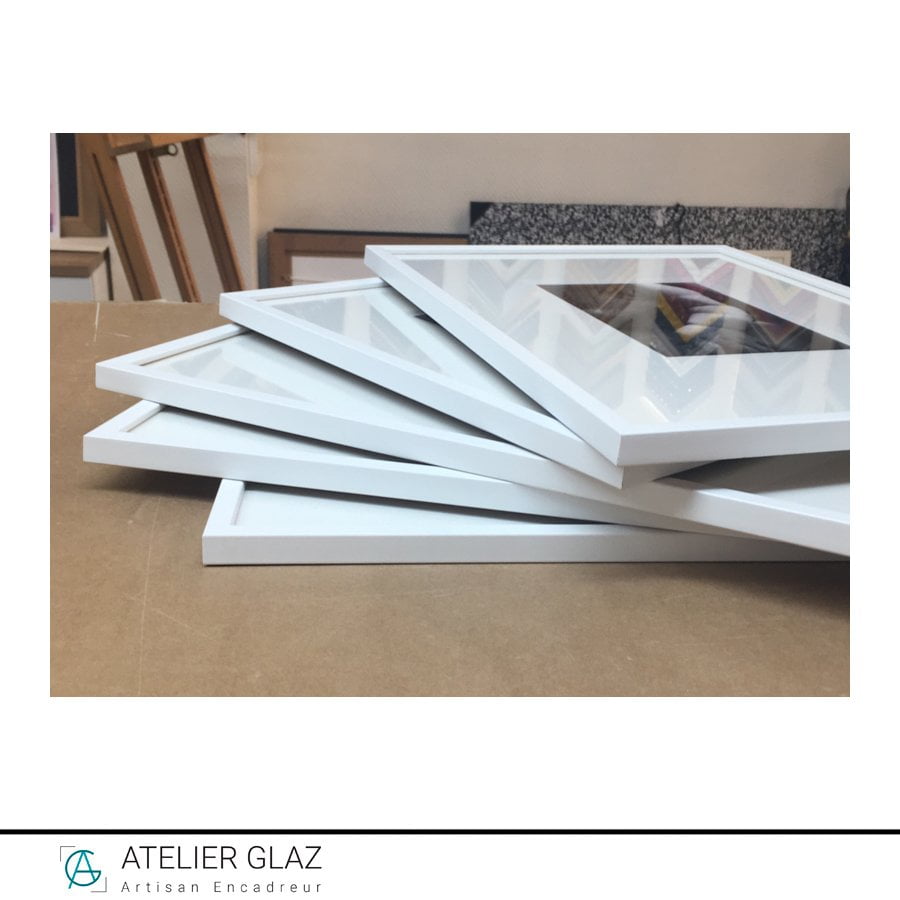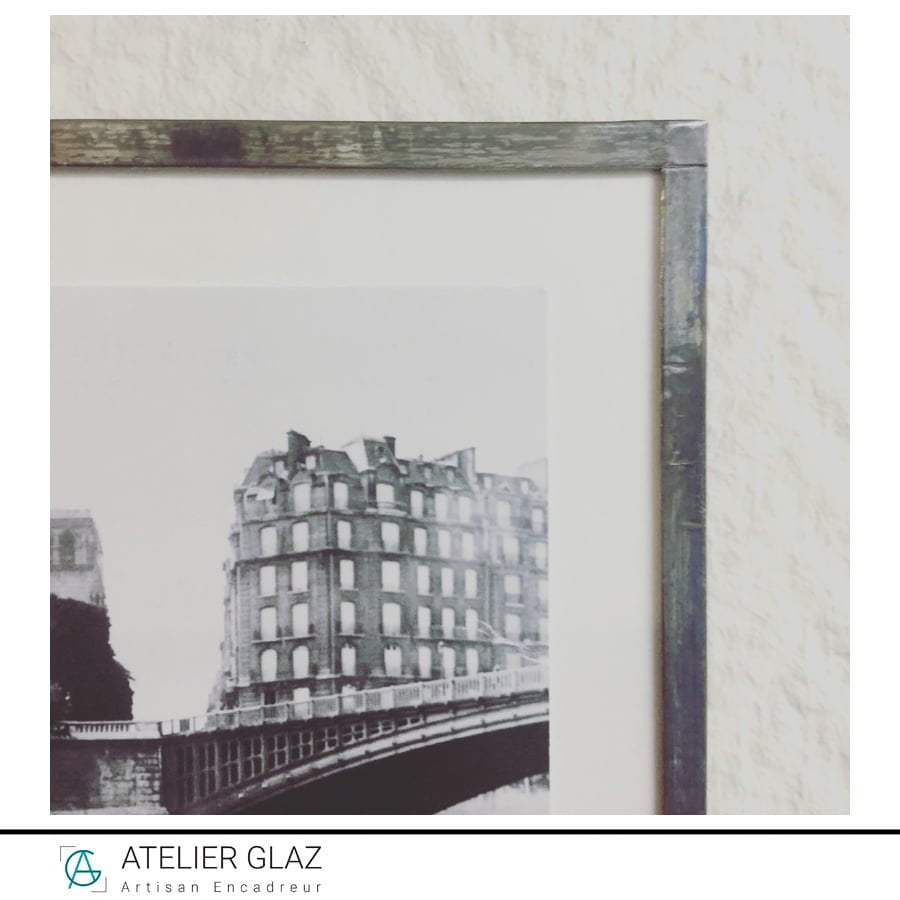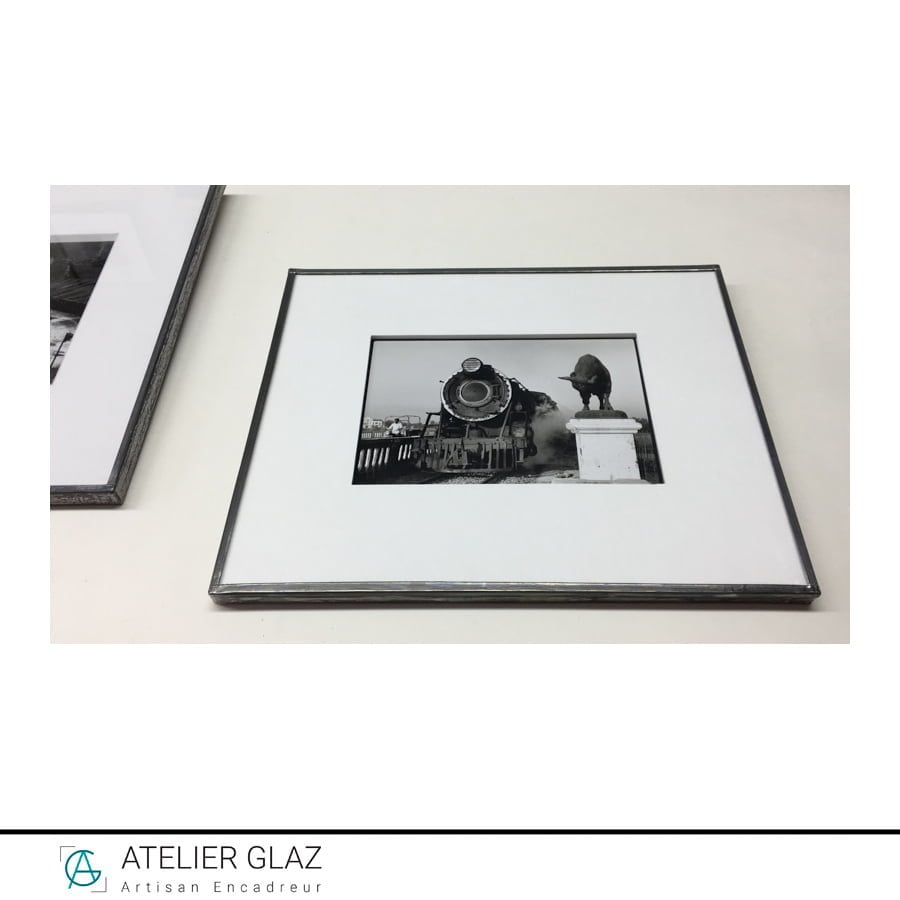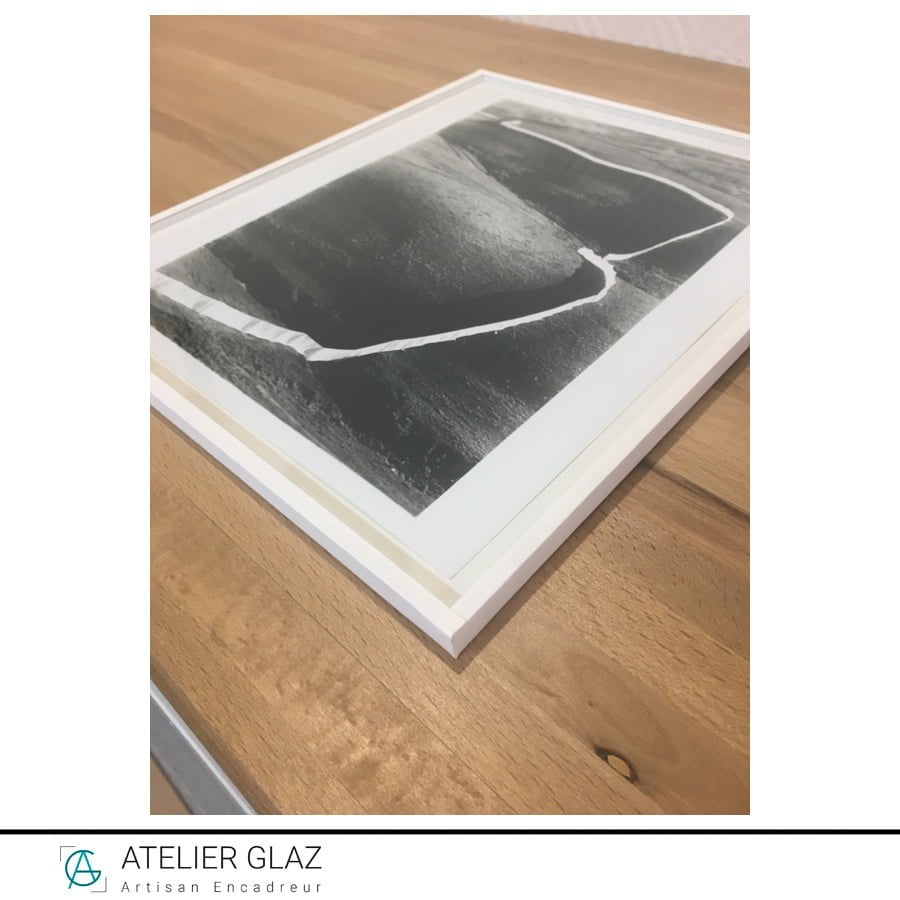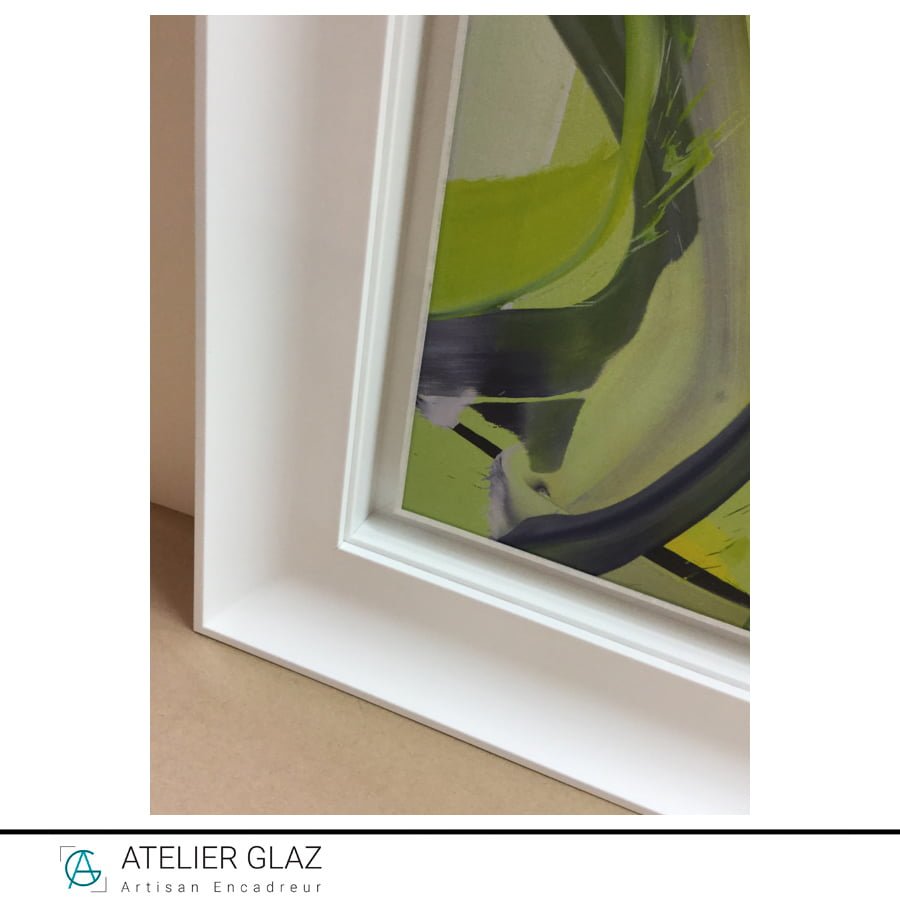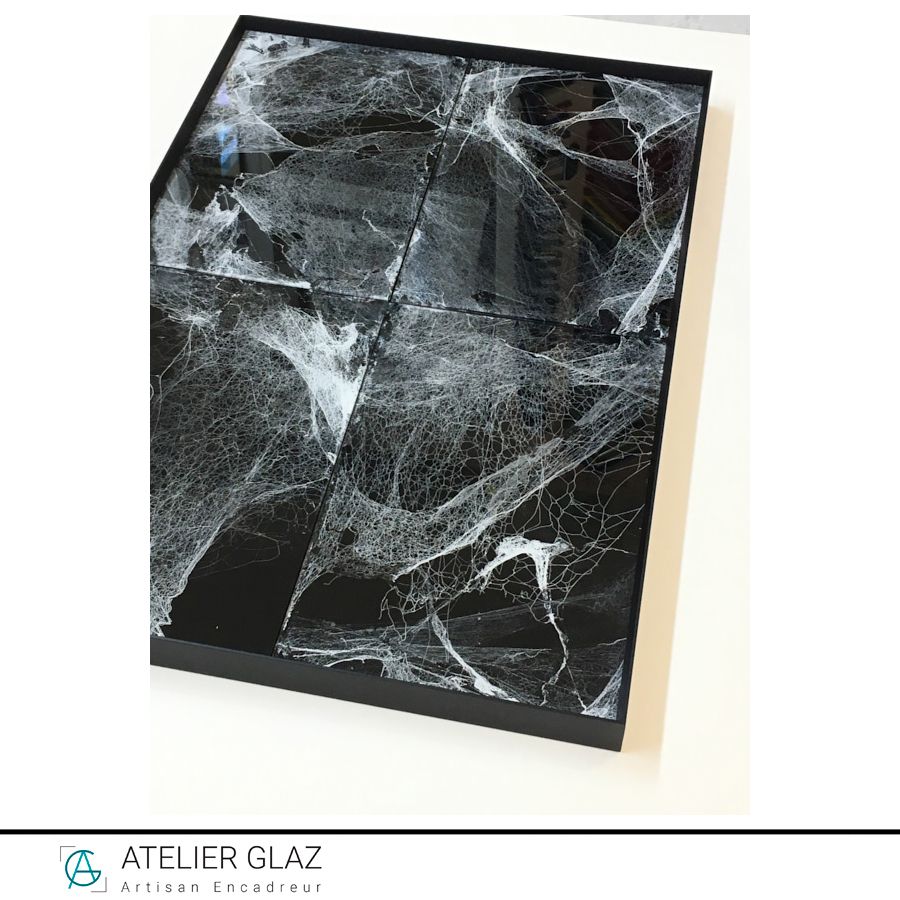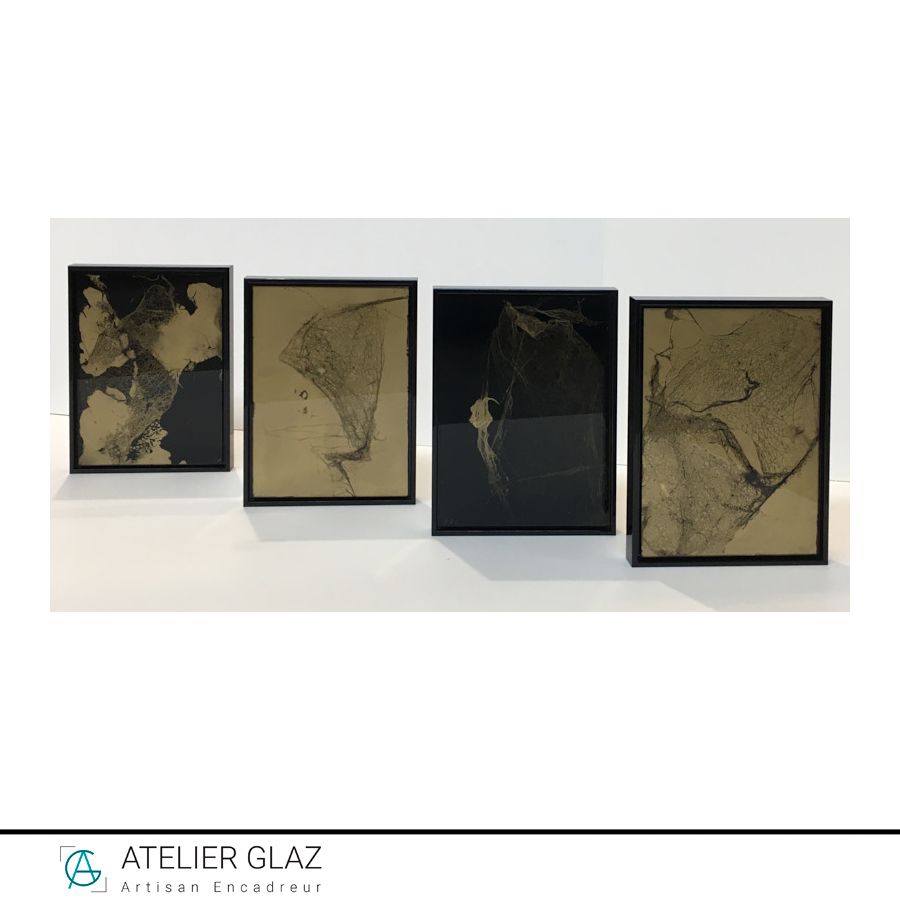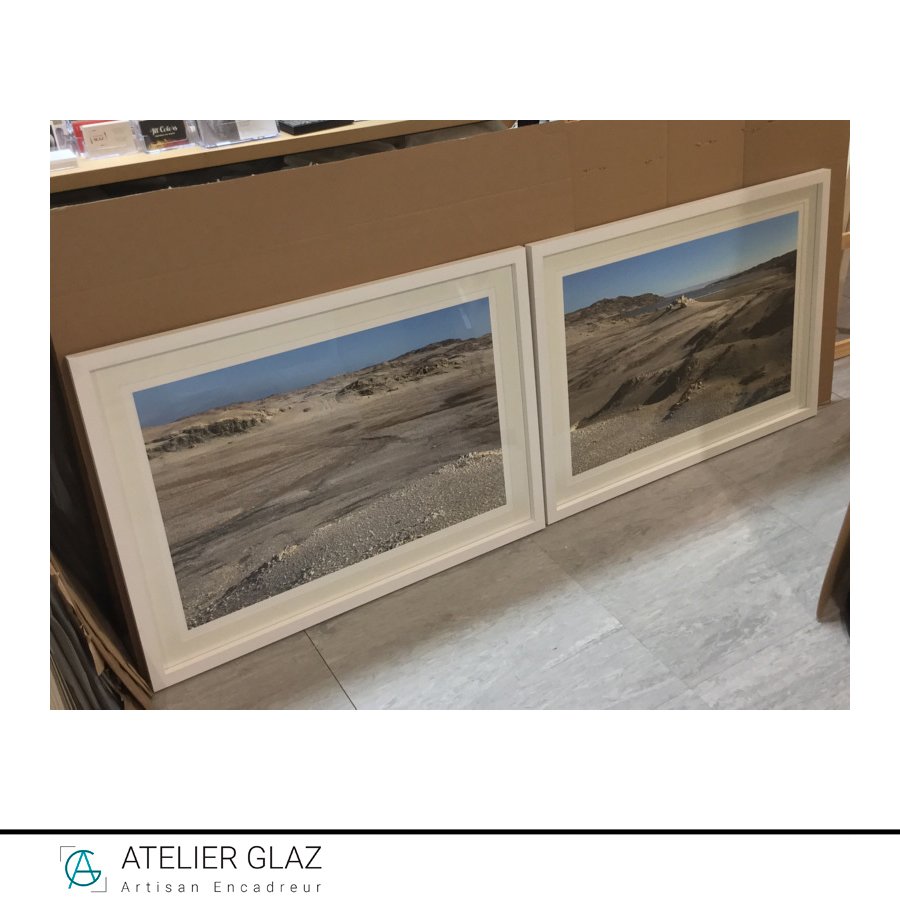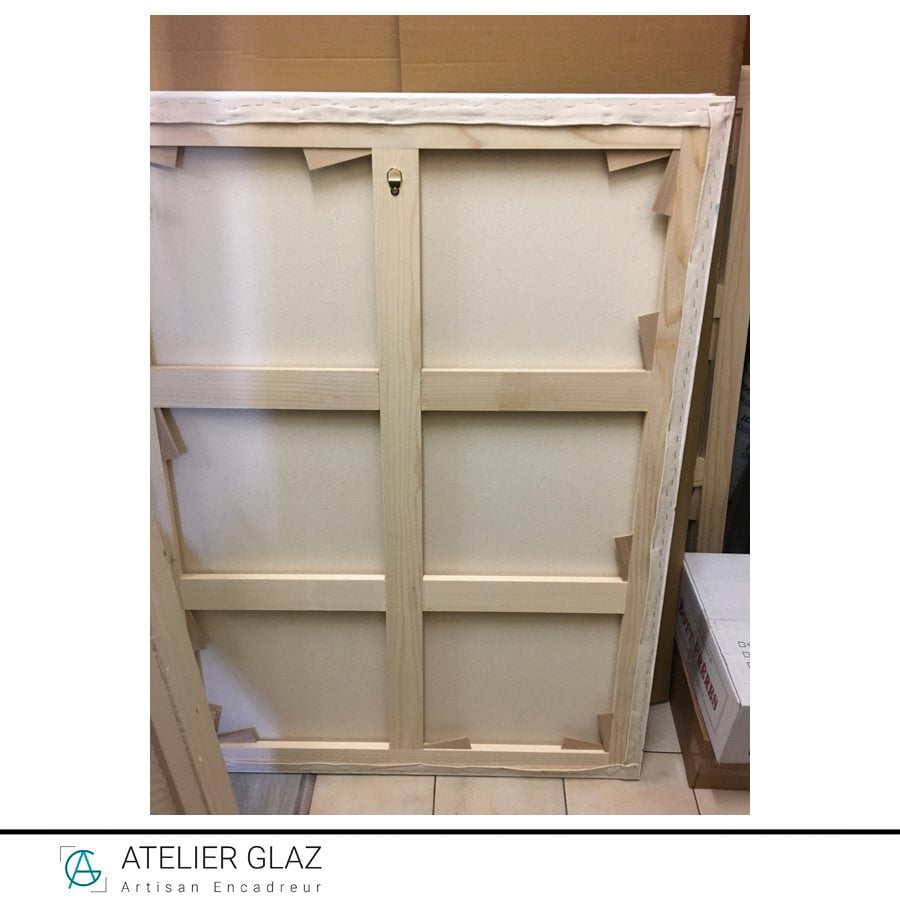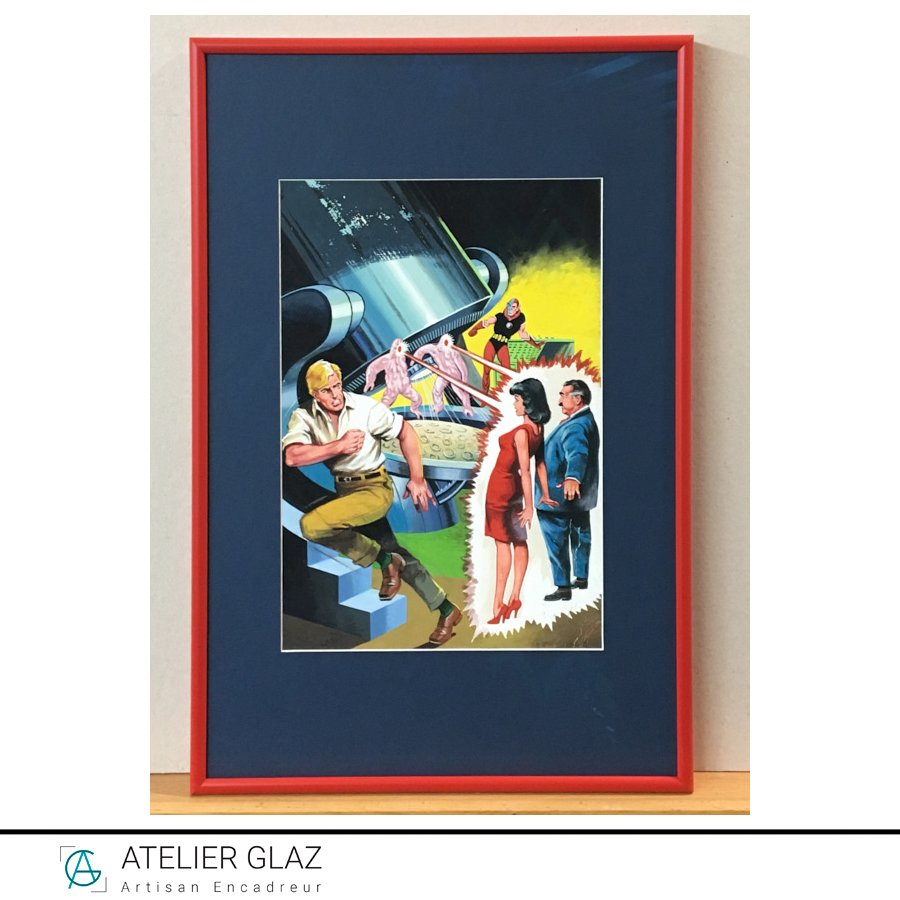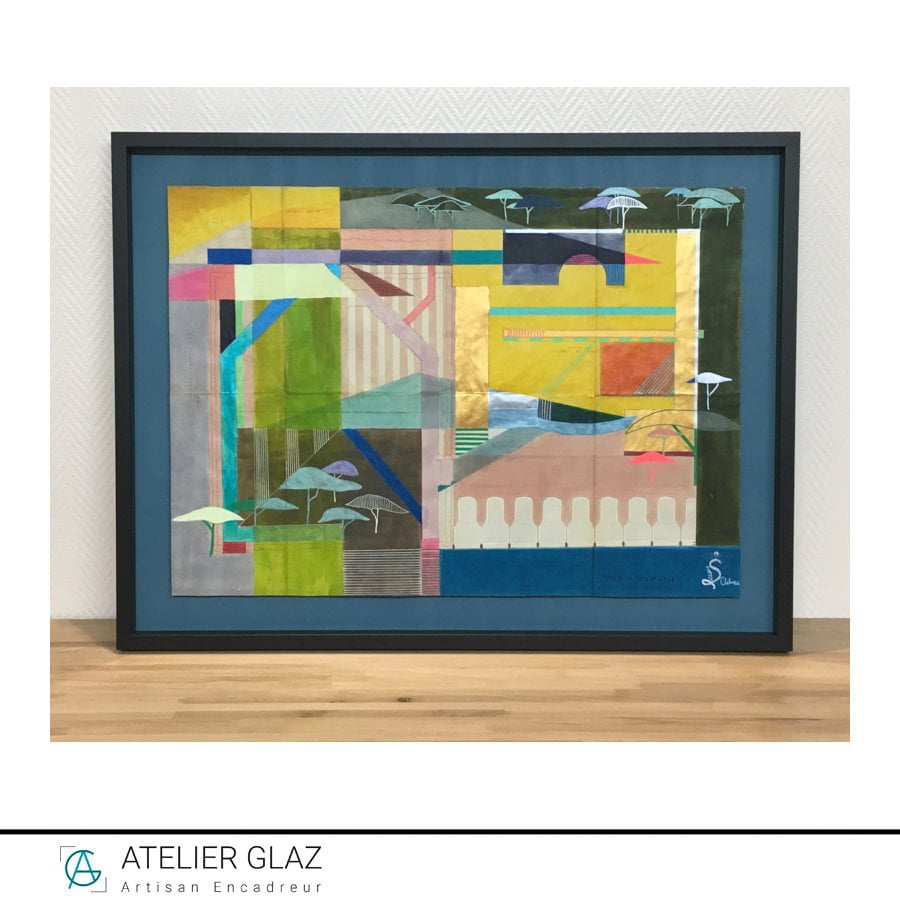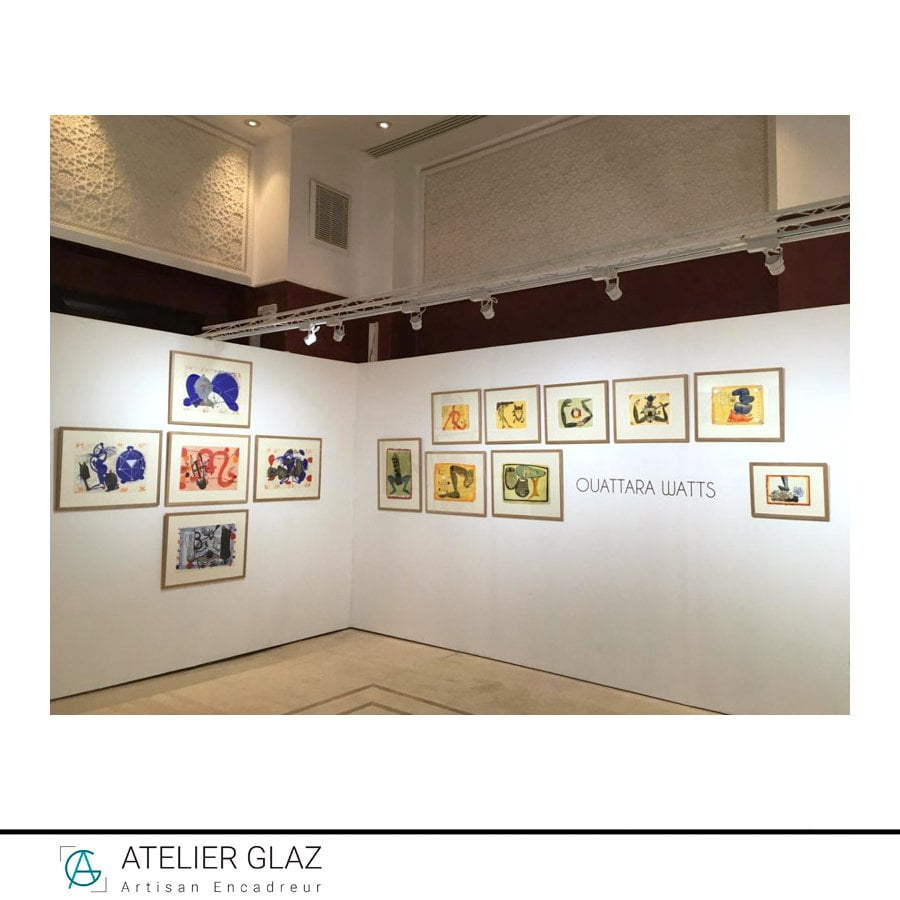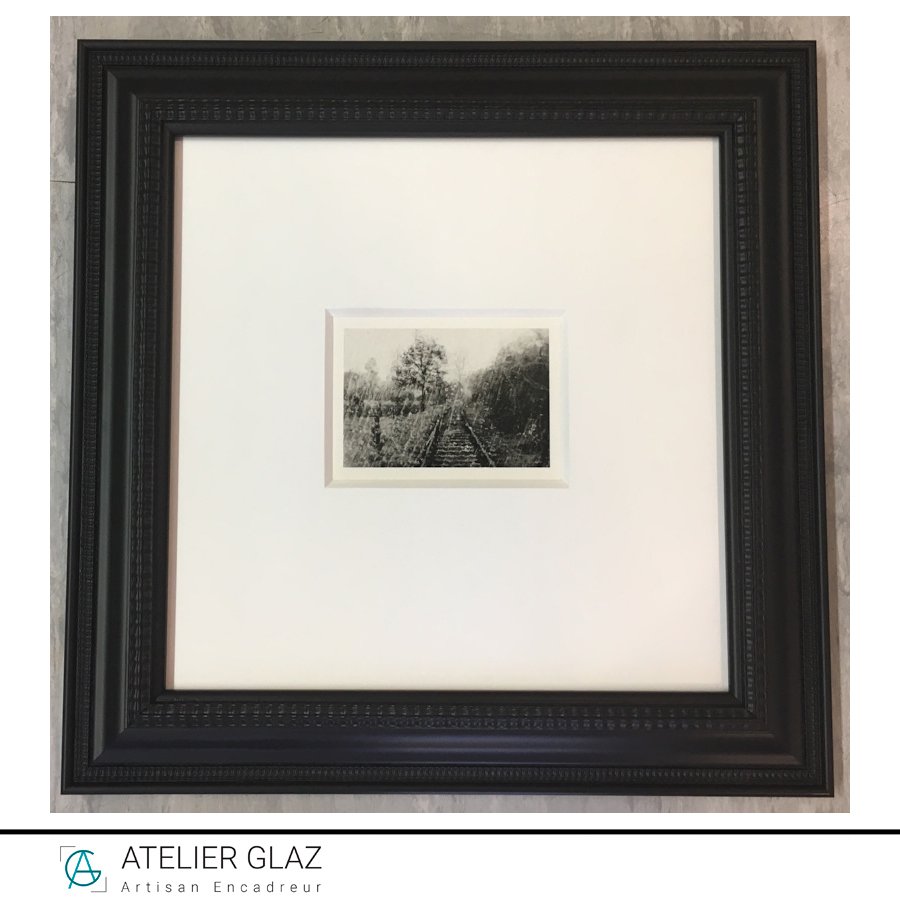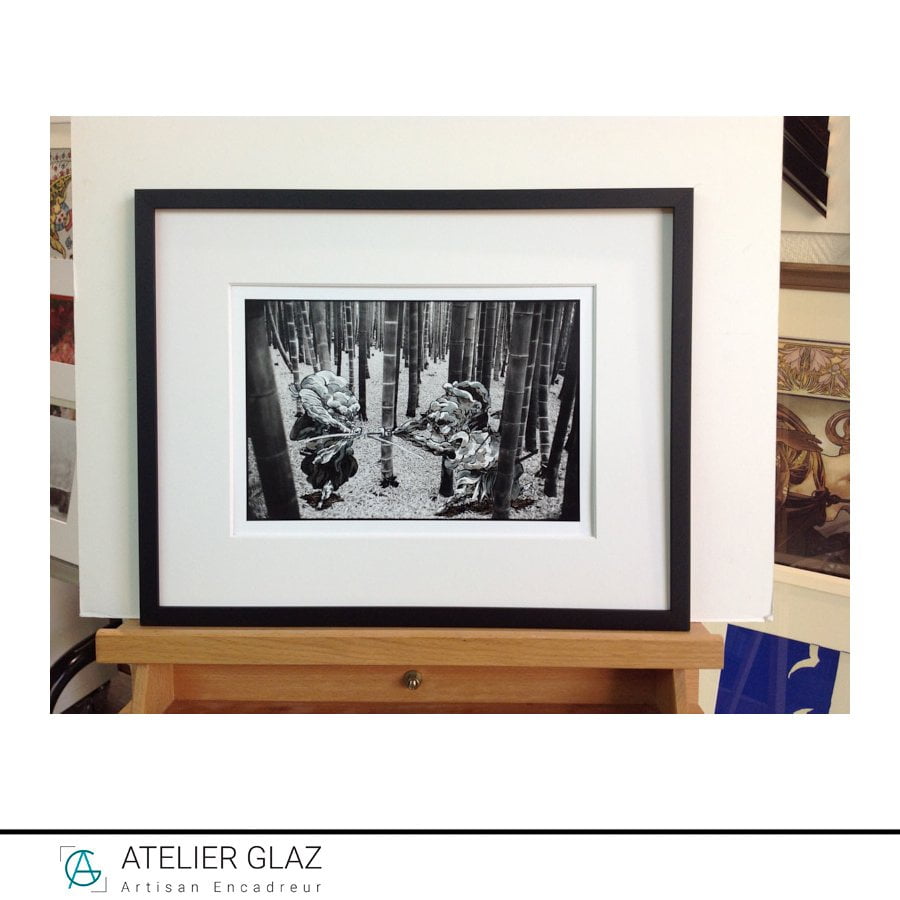
Mounting options & some of the framing techniques we excel at
Passe-partout
A passe-partout, in essence, is what one gets when one cuts an opening in the board. Such an opening allows the art to be presented aesthetically. A passe-partout is positioned over the work to be framed (engraving, charcoal, drawing, reproduction, photographs, etc.). The artwork rests on a museum quality isolation board.
Passe-partouts have several functions. They:
- enhance the framed subject by creating a breathing space between the frame and the work,
- accentuate depth,
- create a contrast to make the art stand out,
- protect the work from direct contact with glass.
Passe-partouts are made of acid free boards and are available in the colour of your choice. Art can be mounted with a square, rectangular, oval, round, octagonal or a scalloped board.
Mount openings are generally beveled, vary in thickness, and are available in standard and museum conservation quality.
The lower margin of the window mount, the heel, is sometimes larger than the upper margin. This is meant to deliberately skew the work upward to better seat the subject and thus restore a visual balance. One can also choose to enlarge the lateral margins to accentuate a panoramic effect; or obtain a “kakemono” effect with larger margins at the top and bottom.
As certified artisans, we take pride in hand cutting our passe-partouts.
Frames for canvas paintings
To frame art painted on a canvas, it is necessary to stretch it on a suitable frame beforehand. One can then enhance the artwork with a variety of frames;
- Tray frames: is an L-shaped profile that’s screwed on the back of the frame & serves as a contemporary and sober presentation. It allows the whole canvas to be visible and lets it breathe without taking too much space on the wall. Tray-frames exist in several profiles, and various finishes.
Tray frames are made with wooden or aluminium profiles of varying depth and colours. Tray frames are an elegant option to display all kinds and sizes of paintings.
They can also be used to present dry mounted photos.
- Rabbet profile: except for tray frames described above, all mouldings have a rabbet profile. Simply put, a rabbet is a groove that holds the painting or the artwork package in place. There are many styles of mouldings (classic, modern, sculpted, closed corners, etc.).
Bevel (Biseaux)
A bevel is a traditional framing technique. This is achieved by placing a cardboard between the work and the mount board. The mount is cut open at a 45 ° angle. Usually, its thickness is at least 3mm. This bevel is then lined with paper before assembling with the mount.
The bevel can also be embellished with a coloured under mat that discretely brings out one of the colours of the art, or of the frame (for example, a gold lined under mat for a golden frame).
A bevel suits all types of work as it accentuates depth. This technique allows a classic and elegant enhancement for all types of art: photos, drawings, watercolours, engravings, lithographs etc.
Box frame
The box frame allows one to frame drawings, engravings, large objects, small sculptures, clothes, minerals, medals, shells, tools, memorabilia etc.
- It is an effective way to showcase a work in its entirety on the chosen background,
- For objects, it provides enough depth for a 3D view,
- For drawings on paper, it elevates the art from the mount, which creates an elegant shadow effect.
The inside and outside of the box frame can be lined with any decorative paper.
Occasionally, depending upon the size and where the work will be exhibited, we recommend wooden spacers to ensure the durability of the work.
French Mats
This technique, which dates back to the 17th century, gives an antique touch to engravings and paintings and adapts perfectly to modern subjects too.
Contemporary French mats are made by hand drawing lines and painting swathes of water colour on acid free mount boards. This is an intricate, time-honoured process, which uses various types of ink to trace lines on the board. The lines enclose one or a number of painted watercolour bands. This is set off against golden paper slivers. One can add decorative elements (for example: interlacing).
The French Mat technique is suitable for all types of frames; square, rectangular, octagonal, oval, round, rounded corners, multi-opening etc.
Objects & Mirror frames
There’s a recurring demand to frame various types of objects.
At Atelier Glaz, we can frame almost anything and we endeavour to create and build an apt technical solution to meet your aesthetic approval.
The thickness and shape of the object determines the framing choices. One needs to decide whether the subject must be visible from both sides. Should it be removable easily? After determining the client requirements, we help you define the choice of materials and advise you on the technique best suited to present the object.
Our clients frequently use mirrors effectively to create a sense of space and depth. At Atelier Glaz, we frame mirrors to your measurements. We propose mirrors in 3 and 5mm thickness according to how big the finished mirror frame needs to be. We can also construct a frame suitable for a mirror that you already have.
You can choose from a wide selection of mouldings that we fashion into a unique, “designed for you” mirror frame.
Mirror weight differs according to its thickness and its size. Moreover, weight distribution varies according to how the mirror frame will be hung. These are some parameters that determine the frame width one can choose.
From a purely aesthetic point of view, the mirror can become an eye-catching decorative element. Contrary to the framing of a work of art, framing a mirror allows for much bolder choices, such as two moulding assemblies, wide mouldings, or decorative, fancy ones.
“Bordé”
There is no adequate translation for the “Bordé” technique. It is a frameless framing technique. It doesn’t use any wooden moulding to finish the frame.
First, the work is sealed with paper. Then, the edges are lined with a thin cardboard. Then, we either apply
- a coloured paper (golden, silvery, patterned…)
- or, we use lead or copper bands to finish the work,
The Bordé framing technique requires meticulousness. It imparts an elegant style to the artwork. However, it is a fragile construct and therefore not adequate for large formats.
Exhibitions, Salons, Interior Decorators
Paris has some well-known Art fairs and exhibitions that attract artists & galleries from all over the world.
Atelier Glaz is privileged to work regularly with some of this select clientele. They appreciate the consistent quality of work and are often delighted by our punctuality.
Atelier Glaz also works with Interior Decorators who want to create unique ambiences when they relook client homes. Projects to modernise office decor or home renovation are often opportunities to collaborate closely with Interior Decorators. The right frames lend a unique mood in either setting.
“Work has to stand the test of time, and for that, one should call on specialists who possess the know how.”
Gallieni















